Gomera & La Palma
Last year, when returning from Hierro to Tenerife, we were well "rocked." Therefore, seasickness didn't affect us at all, although the ferry was swaying considerably. Most passengers ate hearty meals sold at the bar an hour before the ferry departed. Out of dozens of people in the bow compartment, only a few were able to sit (including Zuza and Kama). The rest were lying down and vomiting. Only a few managed to keep vomit bags to their faces. While lying on the floor, they enviously watched Kamil, who calmly sorted photos, holding his laptop with one hand and the seat with the other to avoid being thrown off.
So this year, we have the ferry in the early afternoon, but from the morning we eat almost nothing to avoid suffering too much on the water. However, it turns out that the weather was exceptionally bad then. This time the ferry sways, but tolerably, and without incidents, we reach Valverde and then continue by public transport to La Restinga.
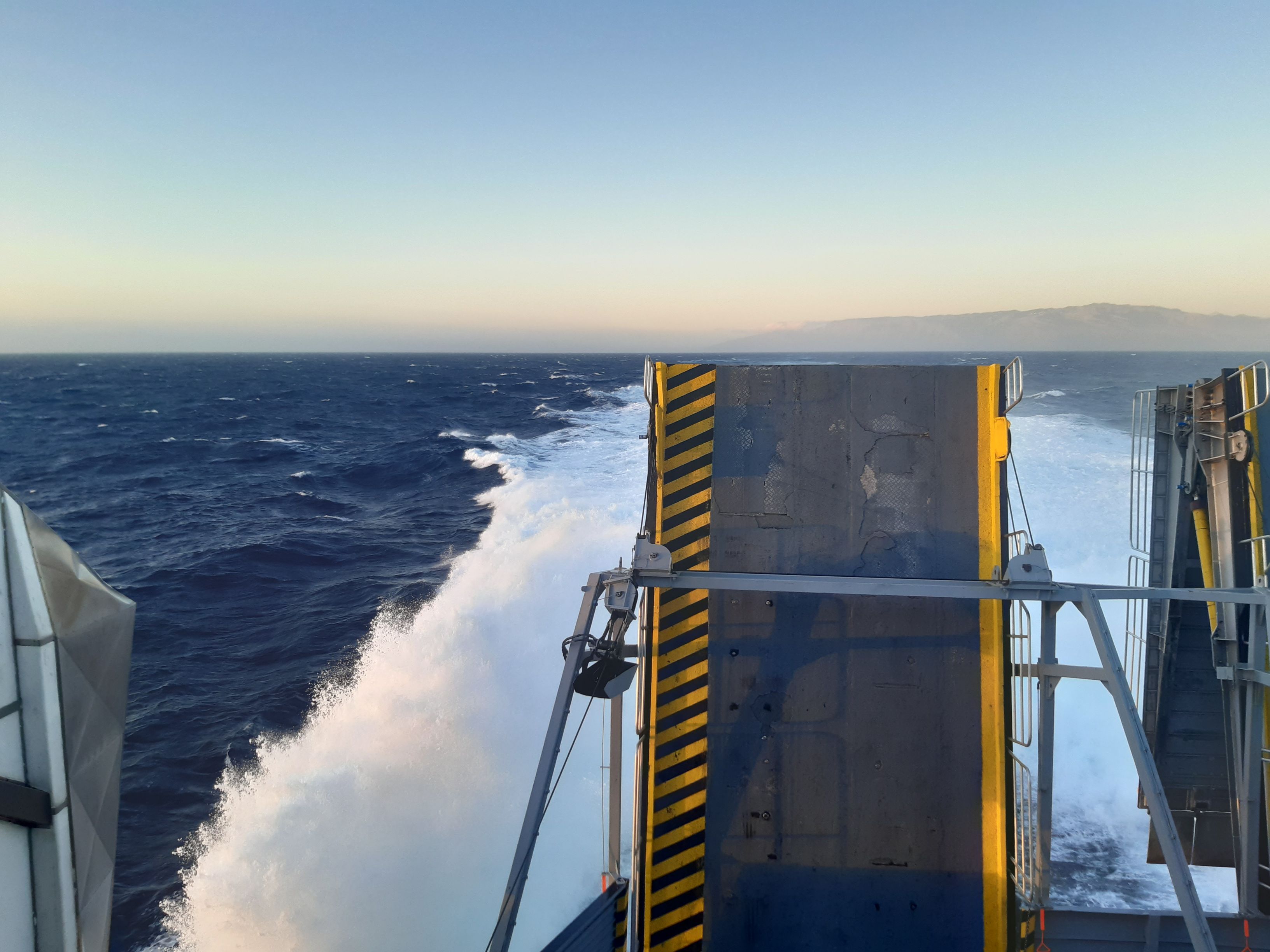
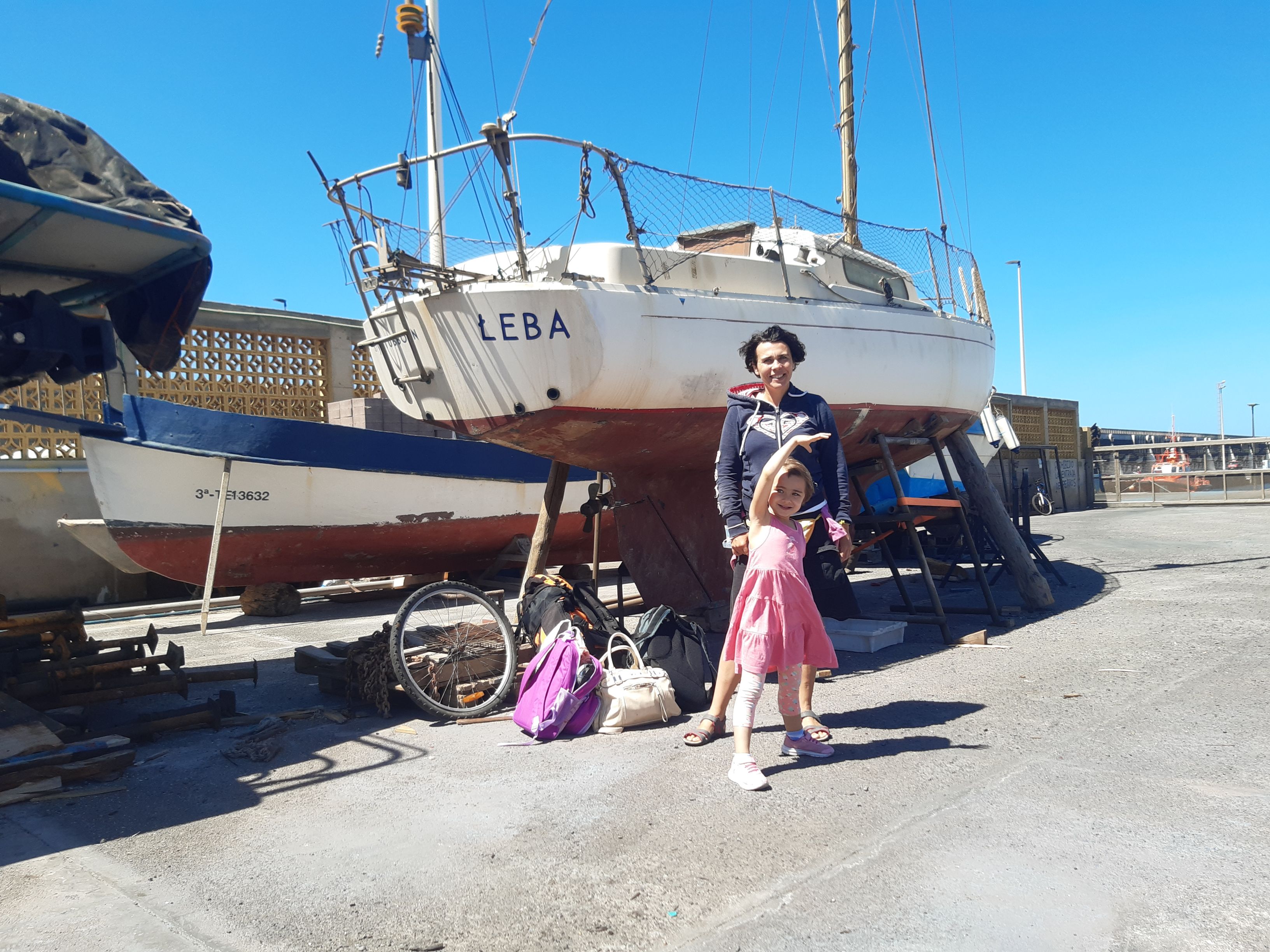
We already, noticed last year that there are 10 diving schools operating in this small town - and that's because the surrounding waters are a reserve and are considered one of the best diving spots in Europe. Since we always wanted to try this sport, we enroll to the course. Although the owner of the school is named Alexiey and his son Dymitri, they are French and do not know a word of Russian. The instructors are also French, fortunately, they speak English well. The first few sessions take place in the harbor, but even here there are already plenty of marine animals.

We like the course so much that we decide to get the Advanced Open Water Diver certification. One of the more interesting dives was a night swim around the port. Later, we learned that we saw quite a few predatory fish because they have learned to take advantage of the presence of divers - people with flashlights help them find prey. At night, large, colorful slugs, centipedes, something that looks like large spiders, etc., also crawl out.
We generally had to dive separately so that one of us could stay with Kamilka, but there was a situation where we had to dive together. The school said it would provide childcare, but Zuza had considerable doubts about how their shy 3.5-year-old would handle the company of a woman speaking a foreign language. As it turned out, the concerns were unfounded— the lady had a daughter exactly Kama's age, came with a set of art supplies, and entertained the young one so well that later Kama asked us when she could stay with her again.

Finally, the time came to launch the yacht into the water and do some sailing. Due to the reserve, anchoring possibilities near El Hierro are very limited, so we moved to La Gomera, which has many natural bays on each side, so regardless of the wind direction, there's always a place to hide.
Unfortunately, the northeast crossing in this area on our boat at this time of year is unpleasant - when crossing the funnels between the islands, at best, one can sail on a close reach, and then the wave washes over the entire deck and hits the helmsman in the face. After this crossing, Kamil’s skin and eyes hurt for a few more days. Later, he receives a "remedy" from friends - pink swimming goggles with a mermaid. When sailing on a close reach, a diving mask is more effective, but the goggles stay with us for several years. Typically, when sailing close to the wind, a canvas hood (sprayhood) works well. However, here it is heavily hit by the rushing water and constantly needs readjusting. We also fear that it will eventually get damaged, and it is very useful.
We explore several anchorages and also drop by Playa Roja, but unfortunately, this year there aren't any friendly campers there. Instead, we come across a cliff full of inhabited caves - people from all over Europe squat in them, though many quickly discover the place has its drawbacks - for example, getting fresh water requires a really long walk. It's interesting to see the cliff lit up with candlelit "apartments" of the cavemen in the evening.

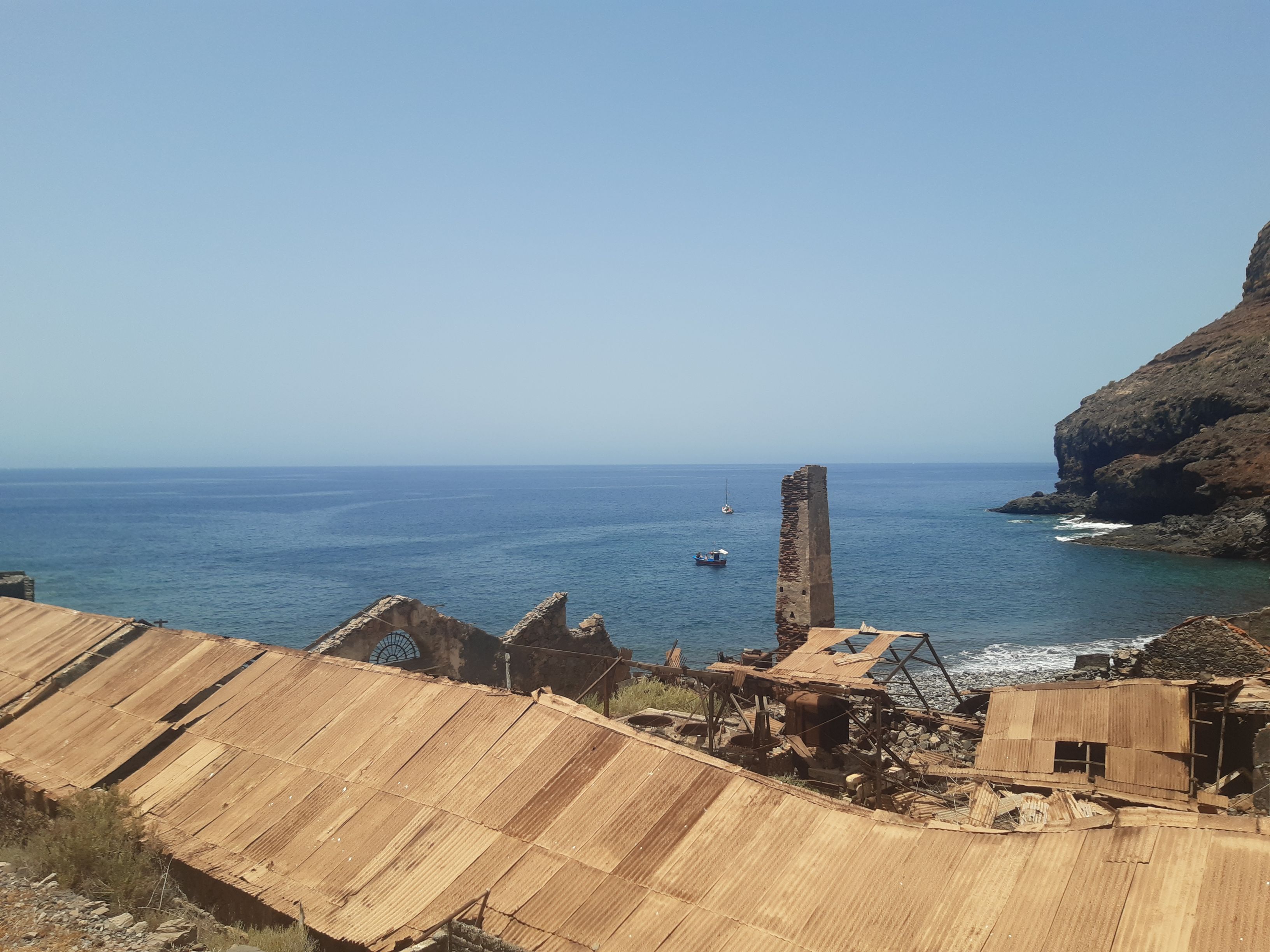

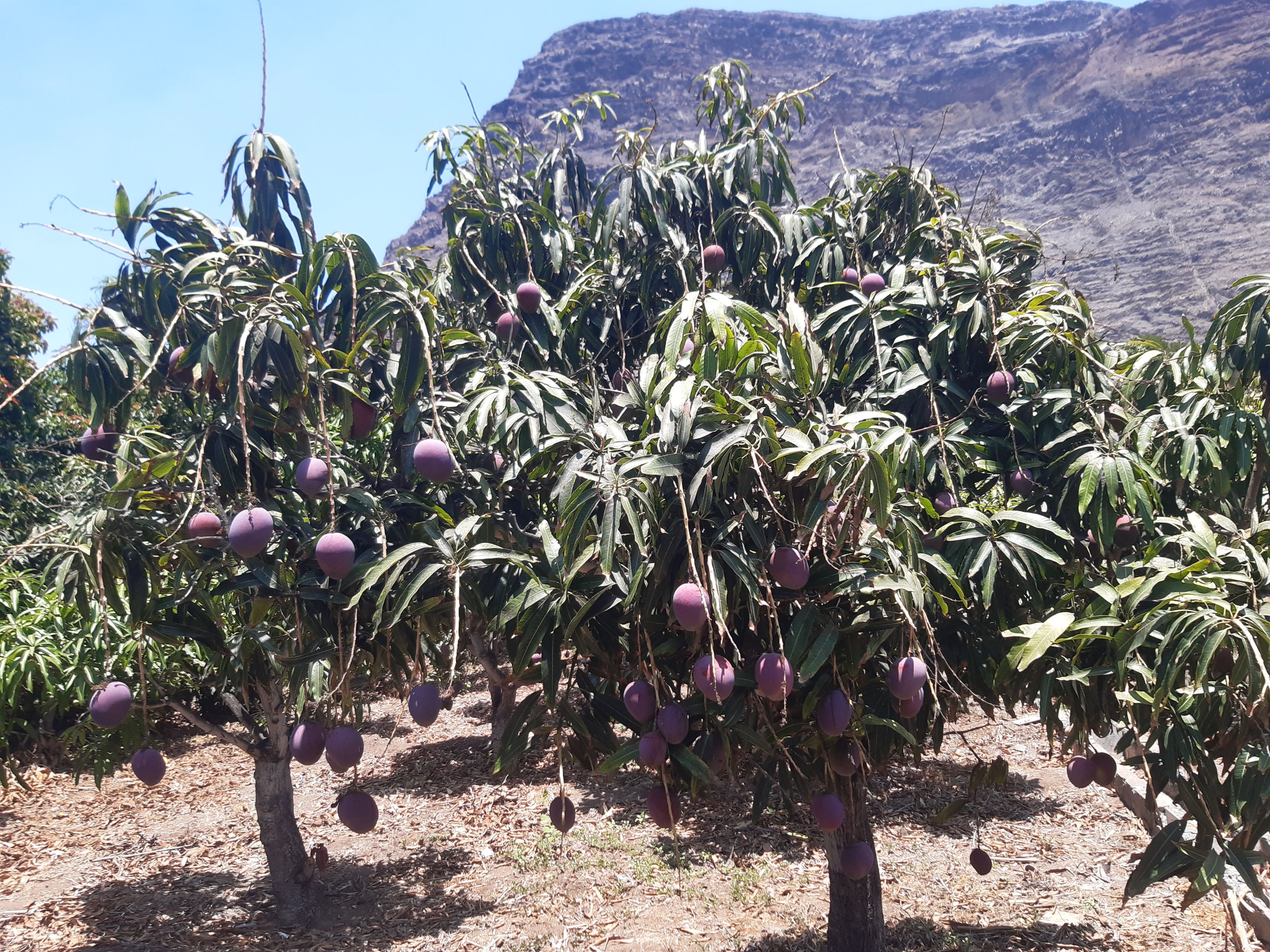
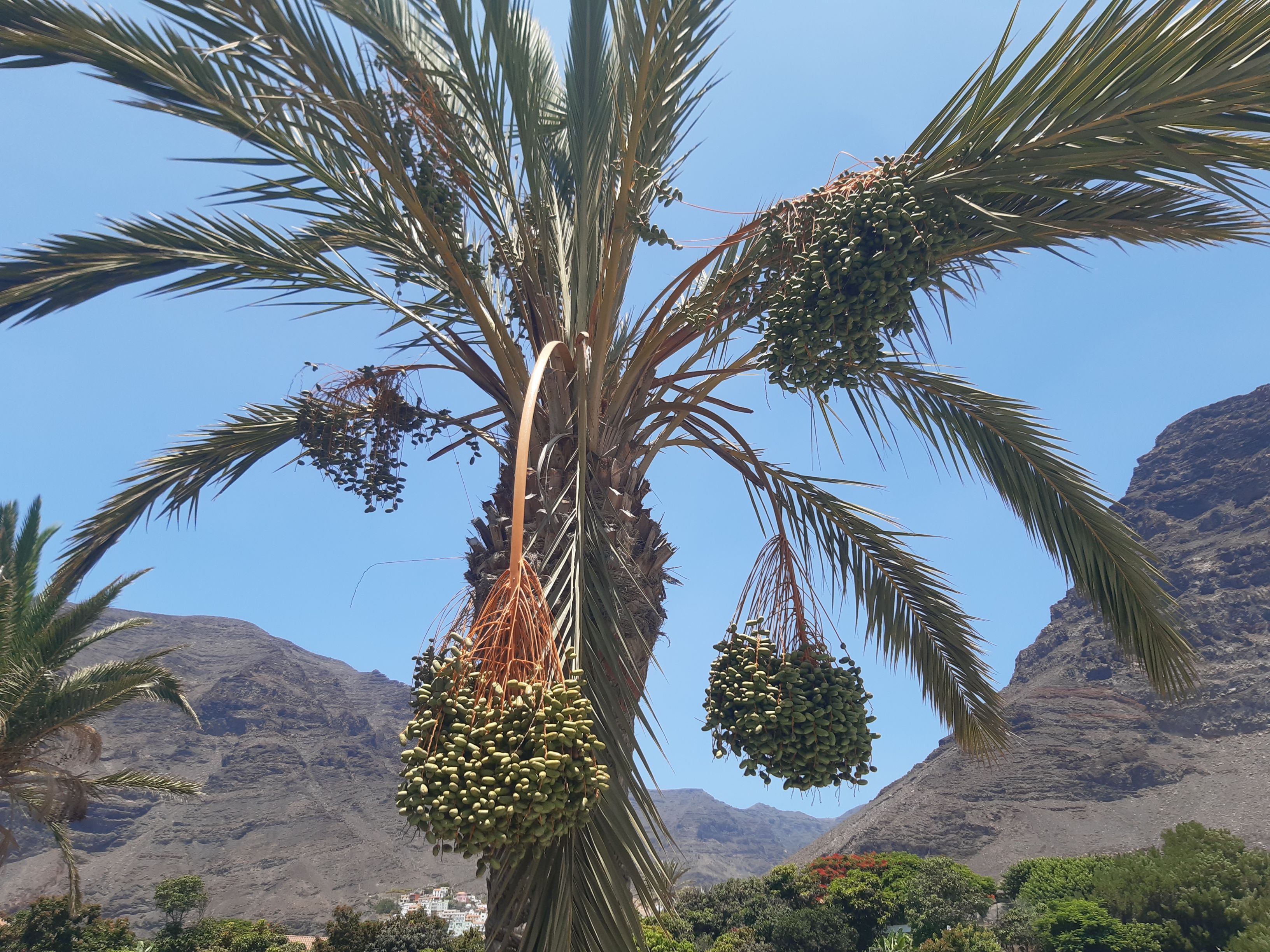
It is worth mentioning that the night at the anchorage is usually calm. However, sometimes a katabatic wind blows down the mountain slopes. It is really strong, but it blows towards the sea, so with the right position of the yacht, there is no risk of being blown onto the rocks. It is strong enough that in such a case we keep watch and monitor the situation, often wondering what will happen first - the anchor releasing, the line snapping, or maybe ripping out a cleat. In one situation, we preferred to wait out this wind by sailing further from the island, where it is weaker. The most frequent sign that the night will be tough was an evening hot wind. Not too strong yet, but warm enough to feel like someone was blowing a hairdryer in your face.
At the town of La Puntilla, we are pleasantly surprised - a yacht with a German flag, parking next to us, wants to agree on where our anchor is. The captain asks English, Deutsch, Polish? - foolishly we reply Polish, to which he leans down to the hatch and shouts - Dorotaaaa and indeed we agree on the anchor location in Polish.

It turns out that Mark and Dorota decided to sell everything they had and move onto a yacht. You can read about their adventures on the blog www.sy-desiderata.de
Both of them know the Canary Islands well, having been there many times, they spent the entire pandemic there and recommend many interesting places for us to visit. They are also selling us a spear gun at half price, on the condition that we share the first caught fish together. This leads to a very pleasant dinner. Kamil had long wanted to try his hunting talents because nothing bites on the fishing rod at the anchorages. So, he is very happy with the spear gun and soon becomes quite skilled with it.
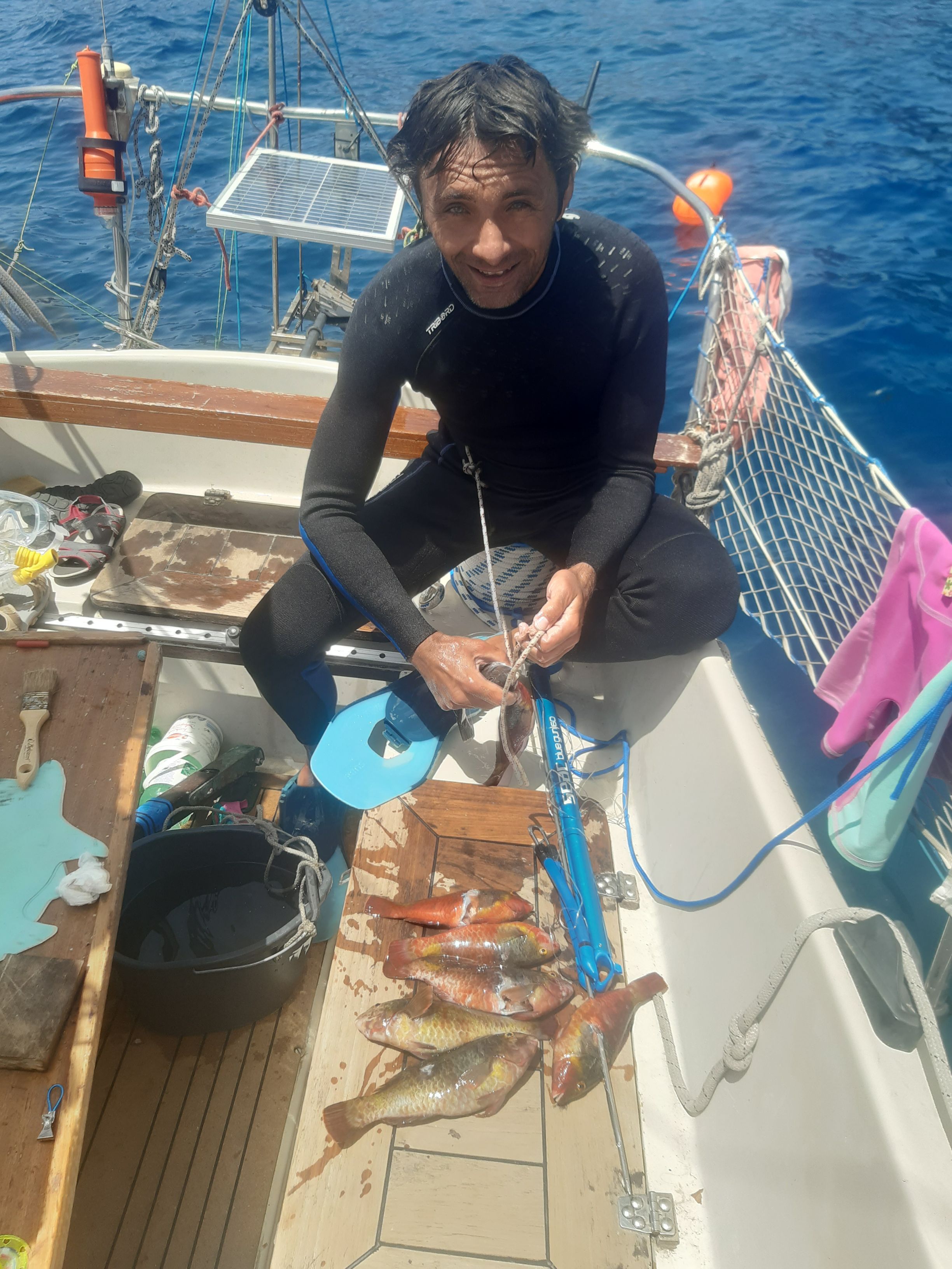
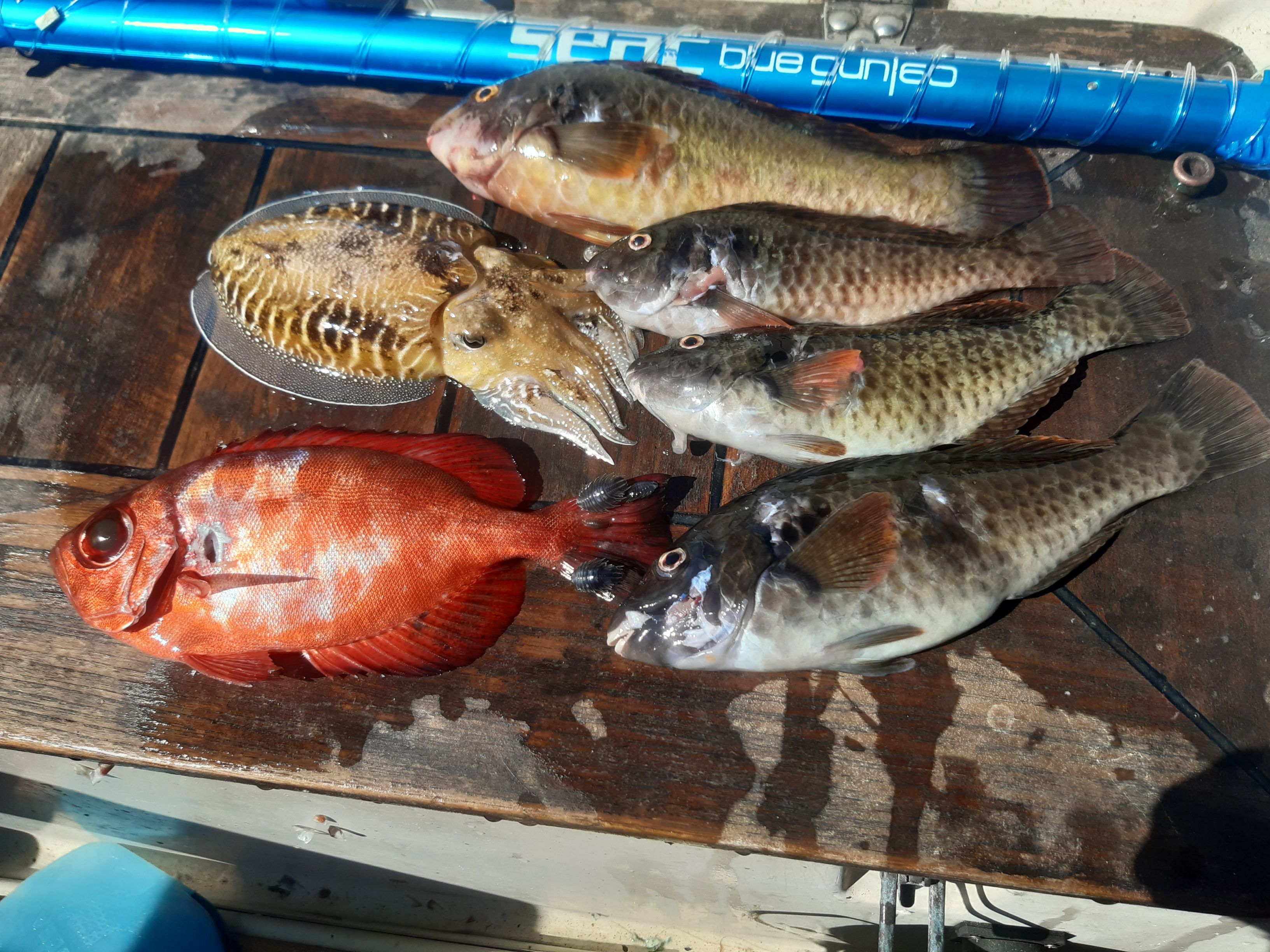
The local youth help him by showing where to look for fish, from what distance to shoot, and how to approach for such a shot. In the end, they give us about a kilo of fish. We reciprocate with żubrówka.

Using the proximity of the town, we always replenished supplies. Due to the wind, we only set up the rubber dinghy when we had to, and normally we swam to the shore with a large, pink, inflatable flamingo.

The system was working very well, but one day we encountered an unpleasant situation. We were returning from shopping - Kamil in swimming fins was pushing the flamingo filled with victuals, and Zuza was carrying Kamilka on her back. The child was in a life jacket, and both were in masks and snorkels. The distance between us and the boat was maybe 100m. At some point, Kamilka got scared of something, so Zuza stopped swimming, took her off her back, and started to calm her down. Only when she turned towards the boat did she realize that the current had taken them and was carrying them towards the open sea. It was strong enough that she couldn't swim against it. Fortunately, Kamil realized the situation, anchored the flamingo, and returned for them. Thanks to the fins, he managed to tow his daughter to the boat, and Zuza regained full mobility and was able to swim, but it was difficult for her. From then on, we always have fins with us when we swim from the anchorage to the shore (even by dinghy).
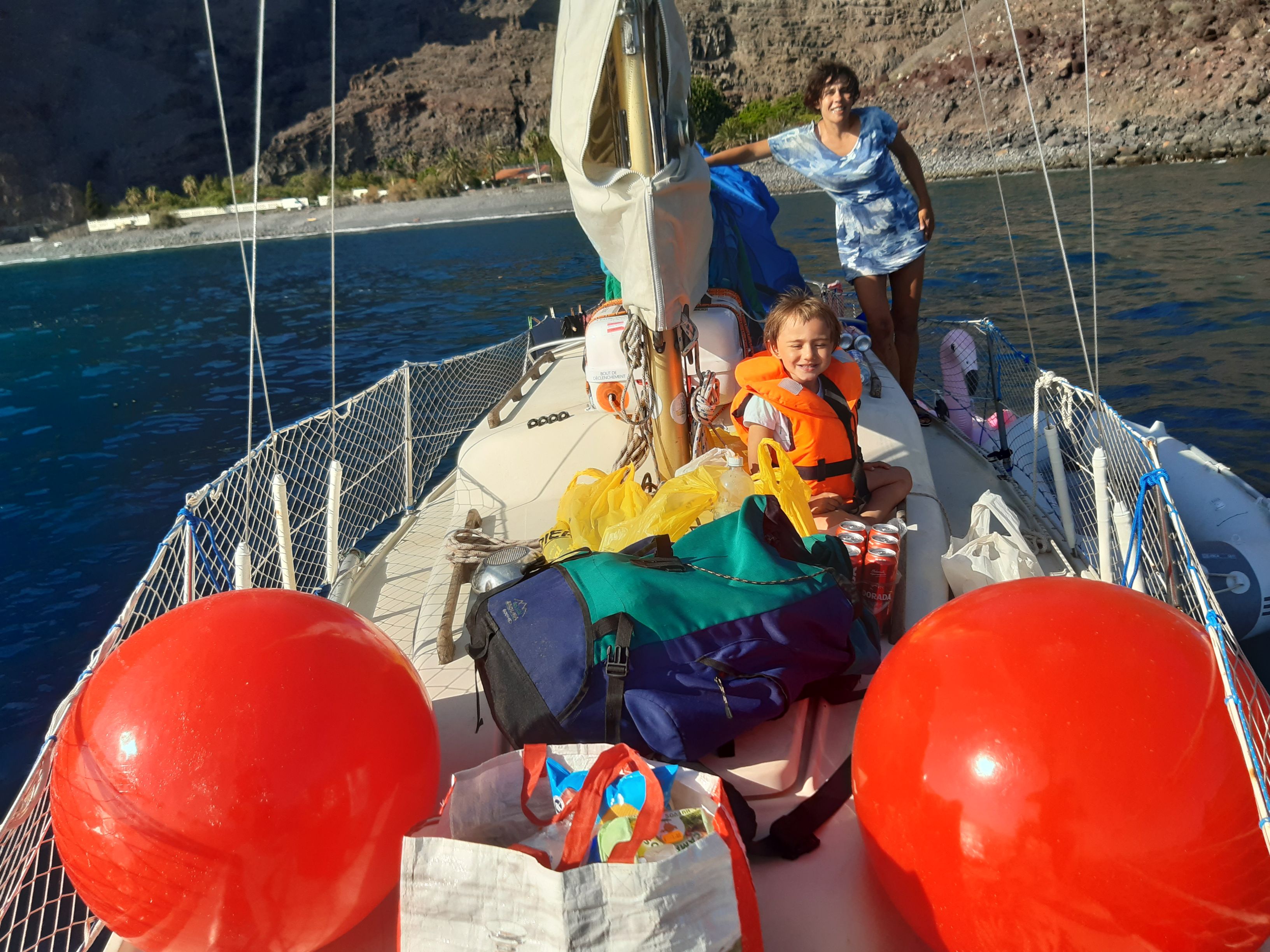
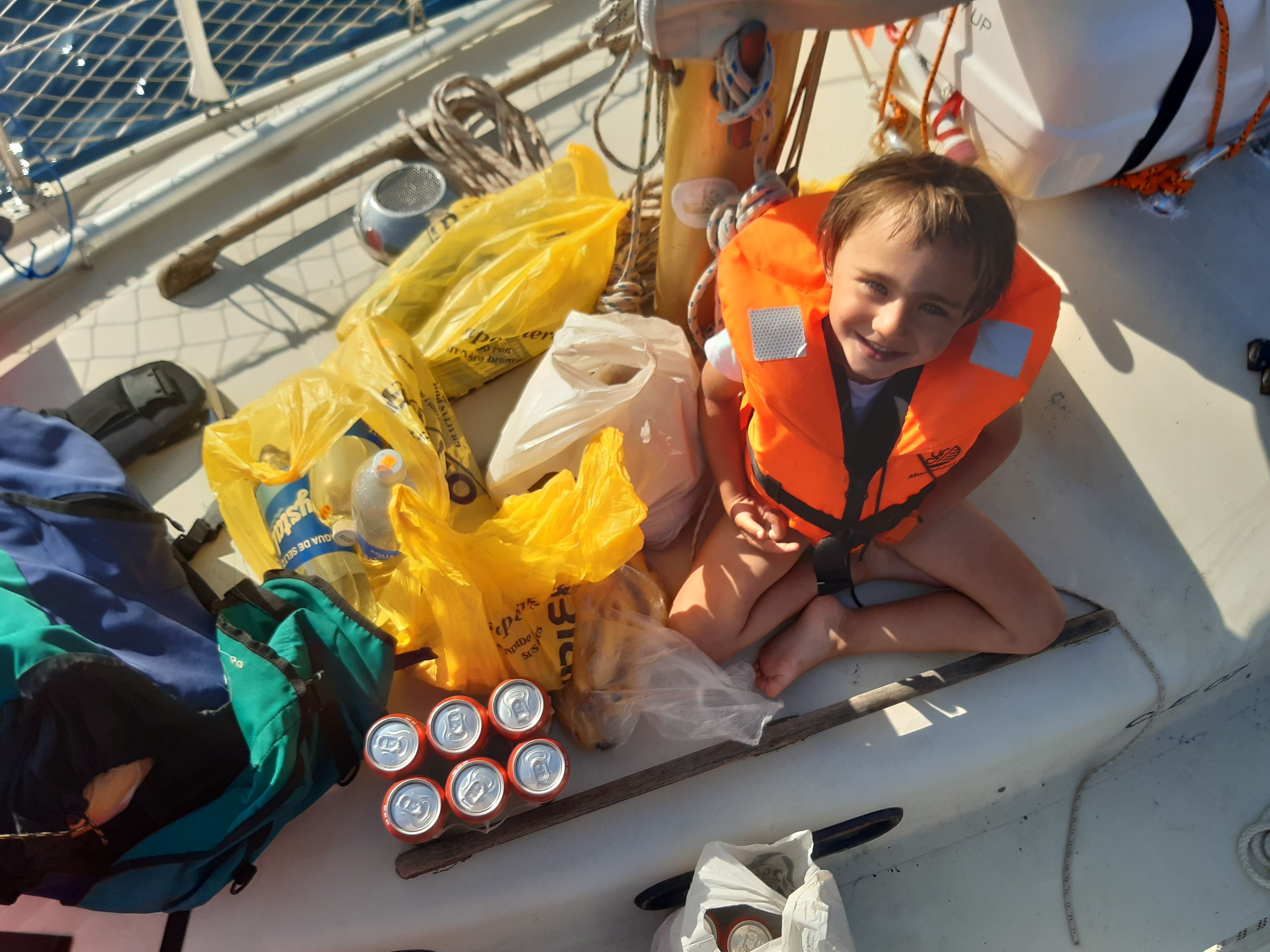
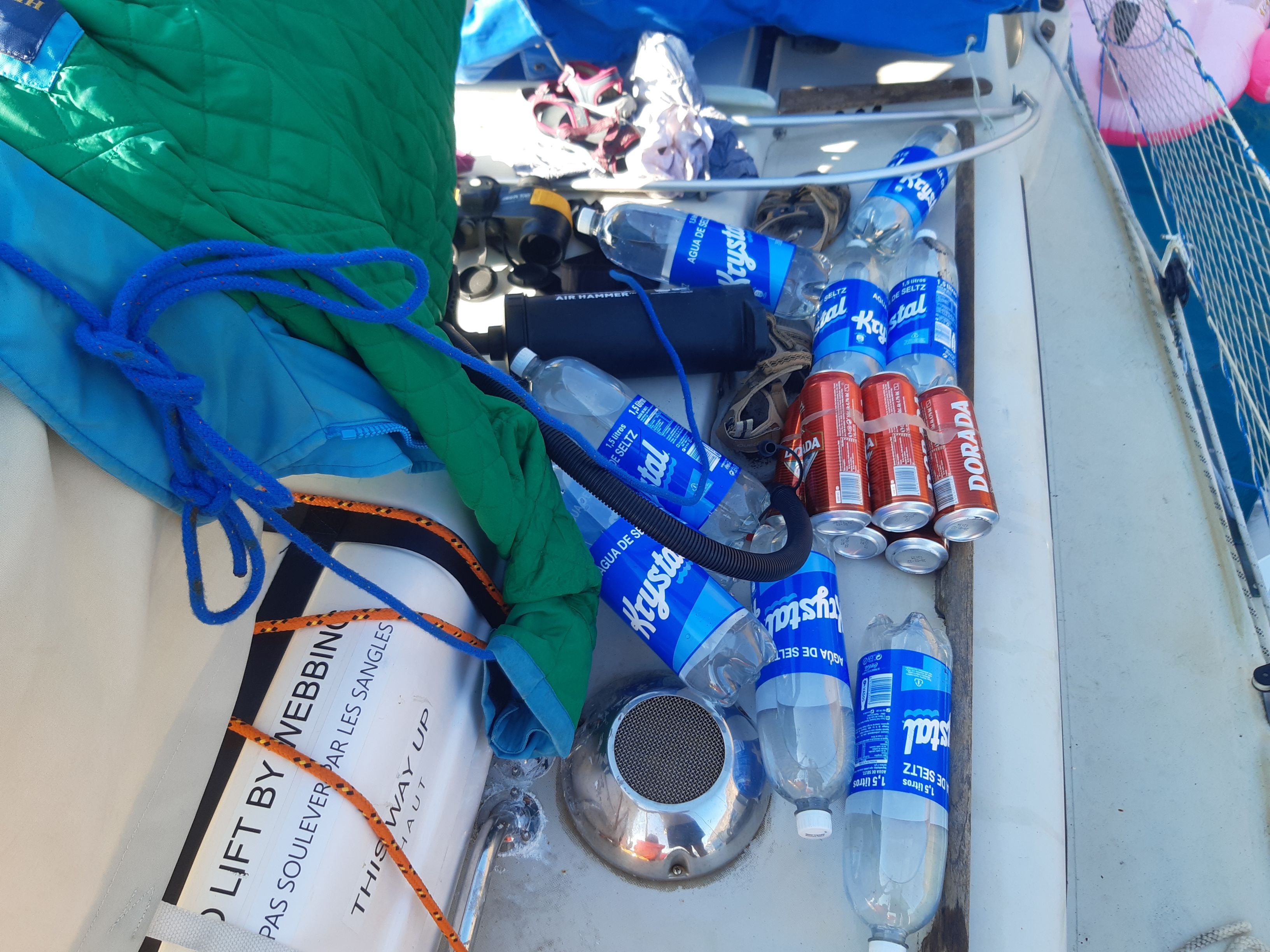
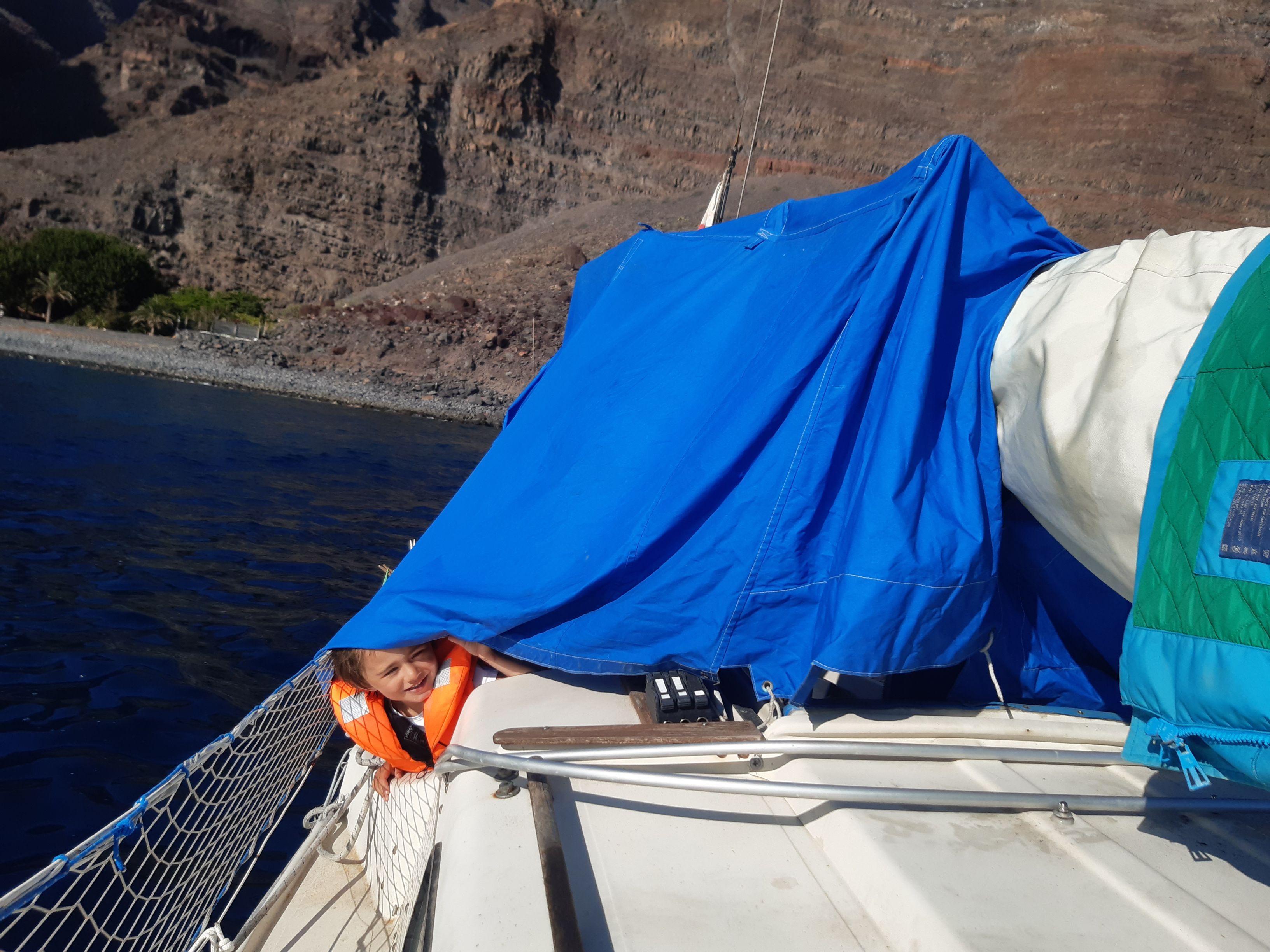
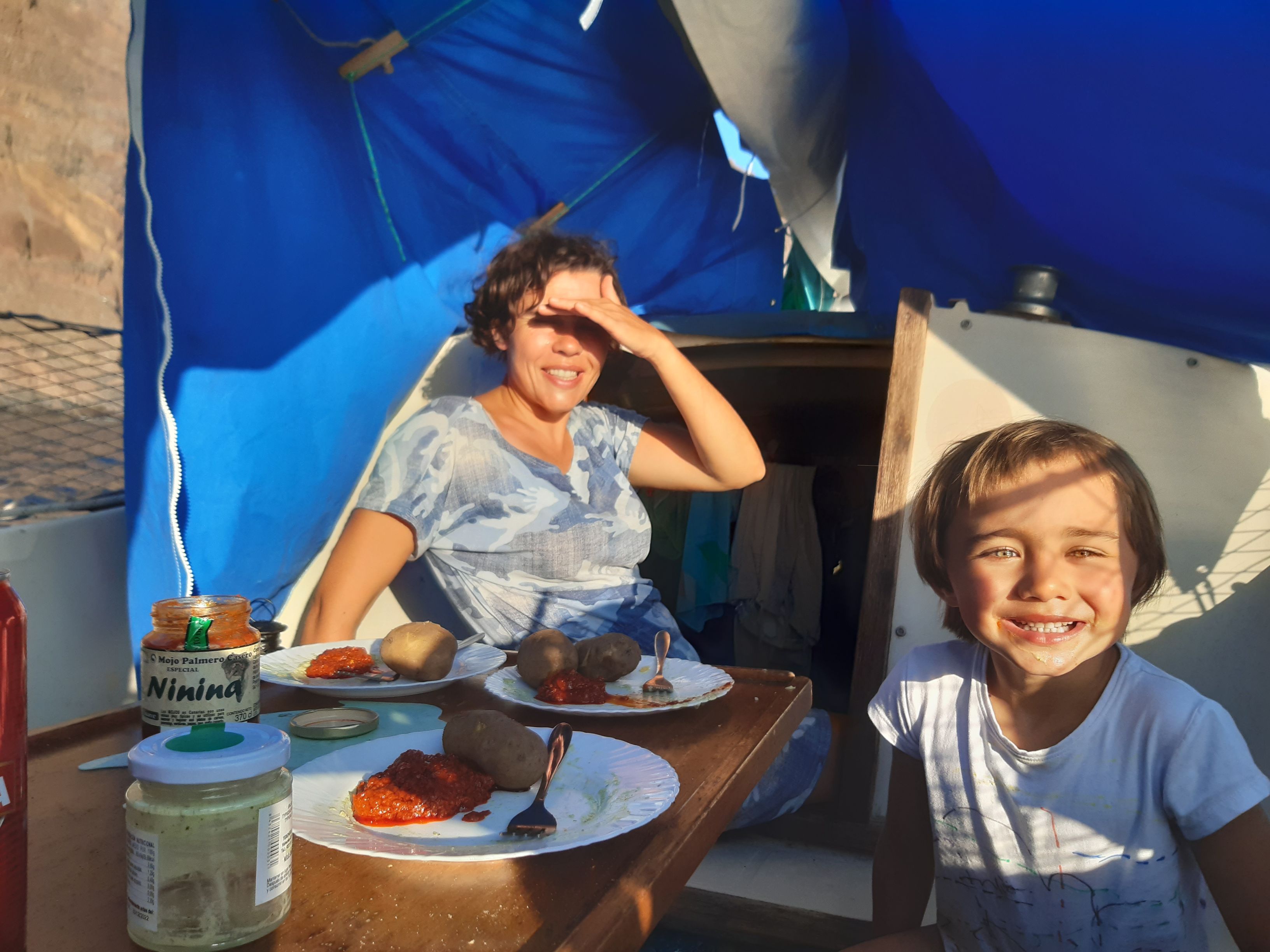
Mark and Doro recommend a hike along the Ruta Barranco de Los Ancones. It is indeed worth it – after a month of viewing desert landscapes, we find ourselves almost in a jungle.
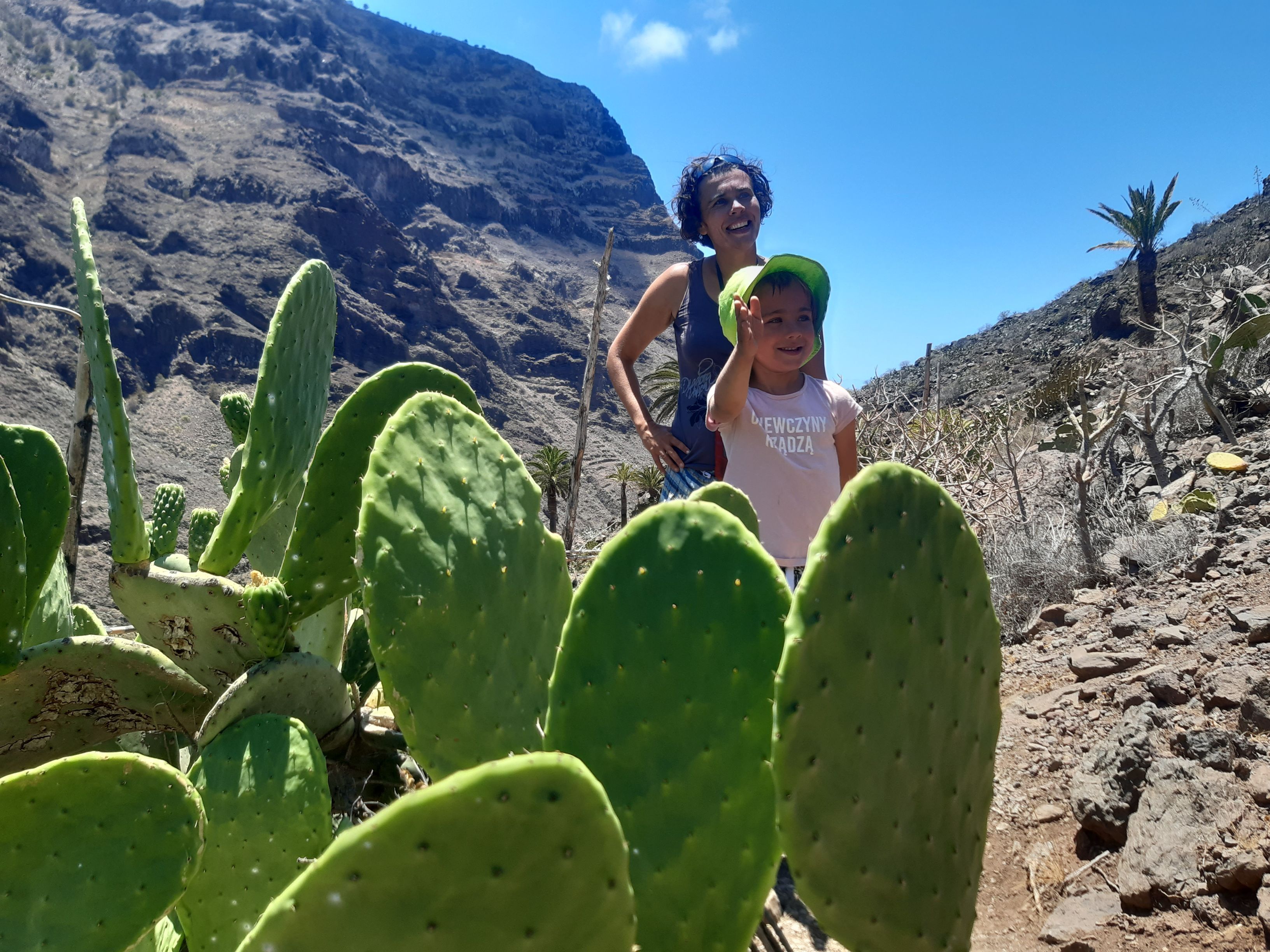




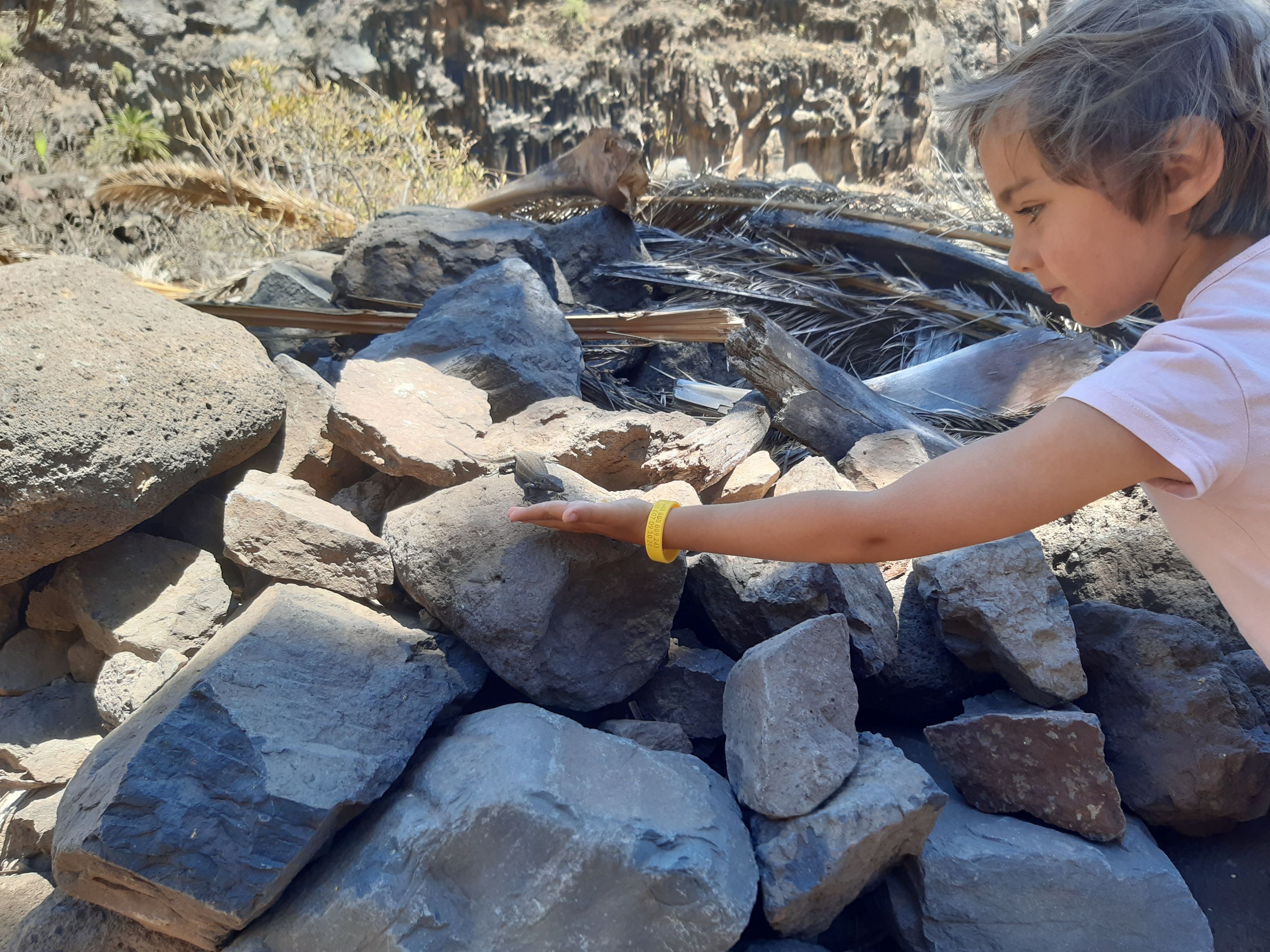
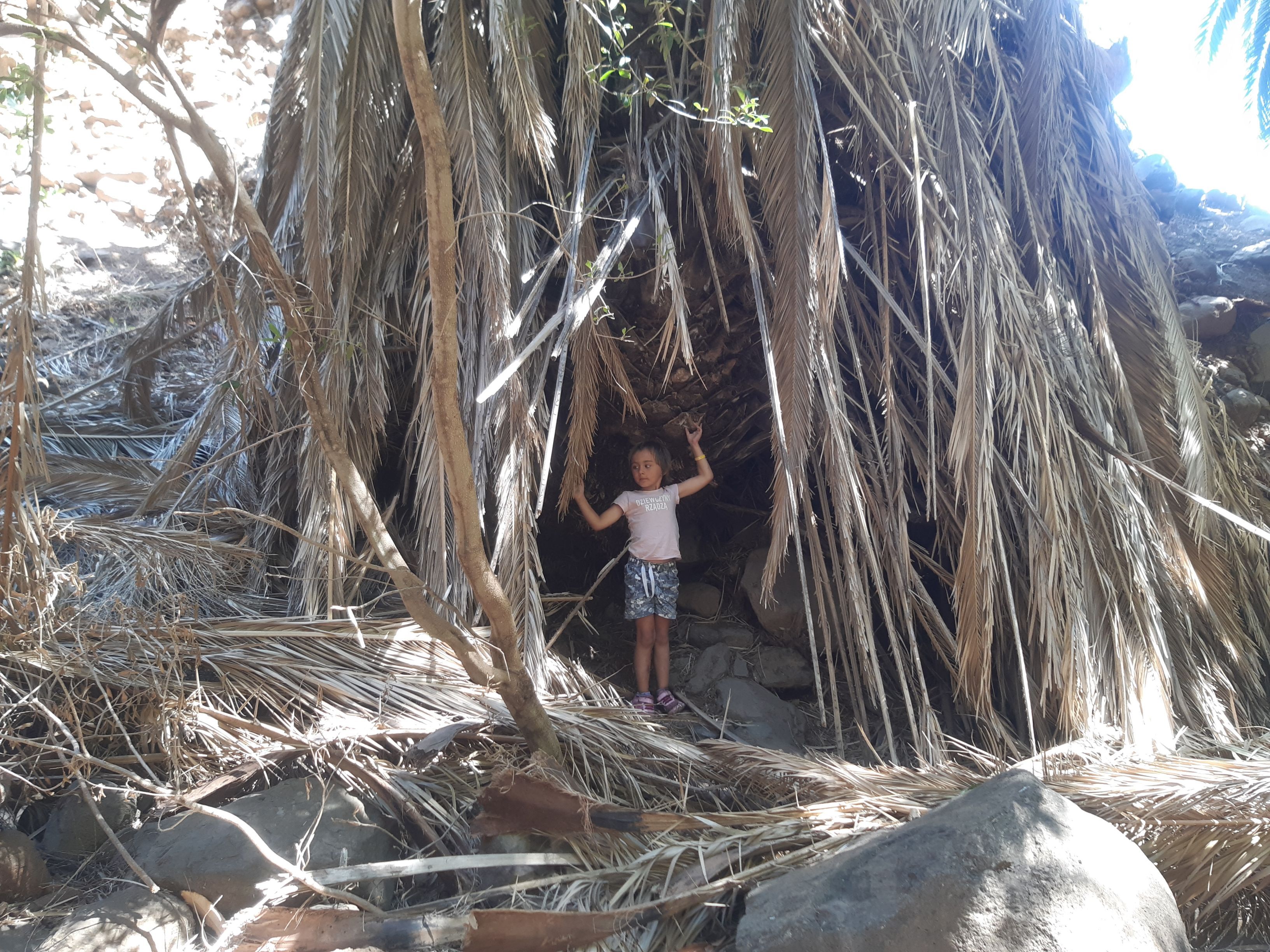
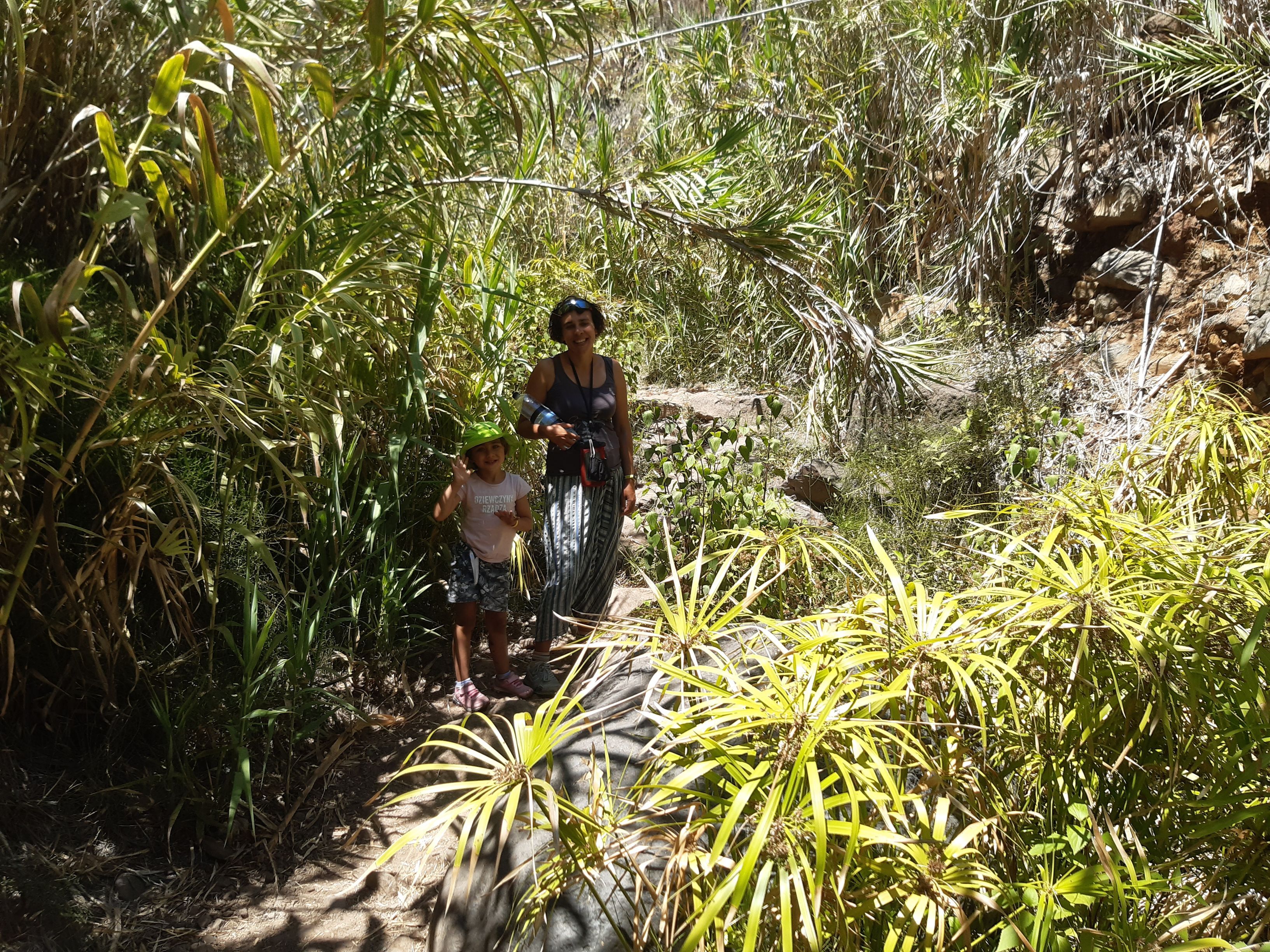
At the end of the hike we can shower in Arure waterfall.

Along the way, we also pass by the picturesque settlement of El Guro. Many artists live there, as evident from the decorations on the houses.


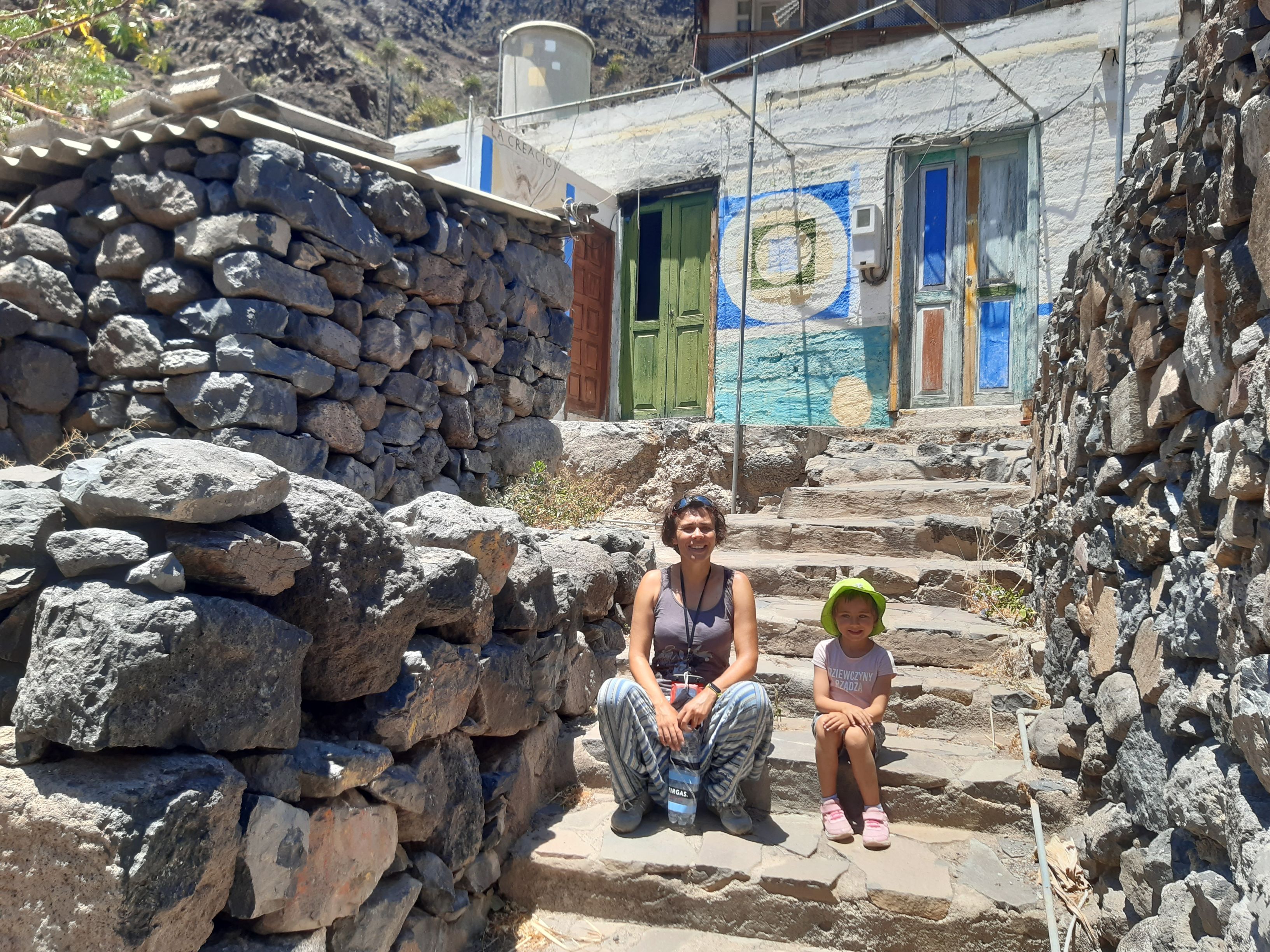

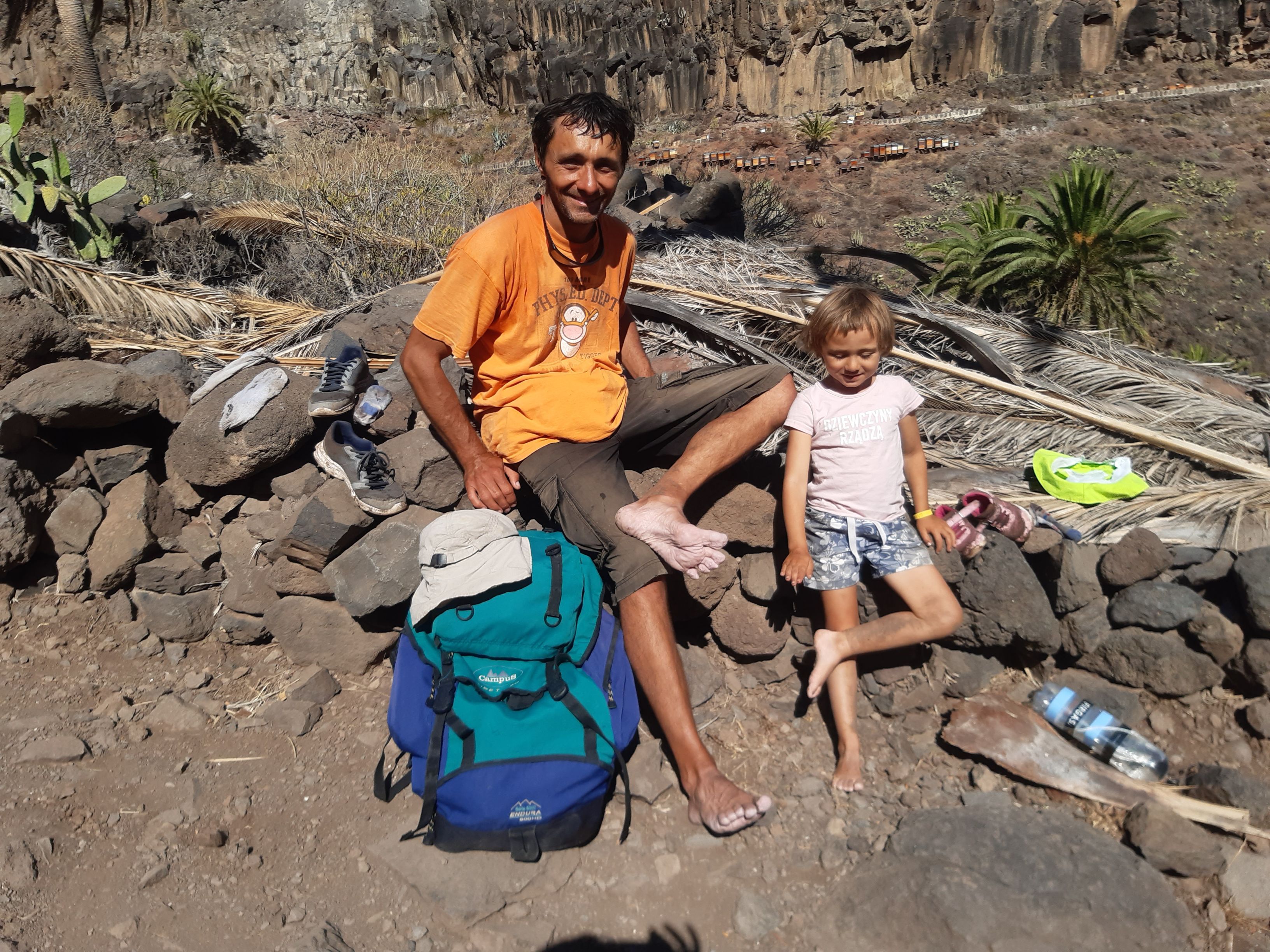
We're also going to the other side of the island to see the laurel forests, which the people from Gomera we met last year told us about.

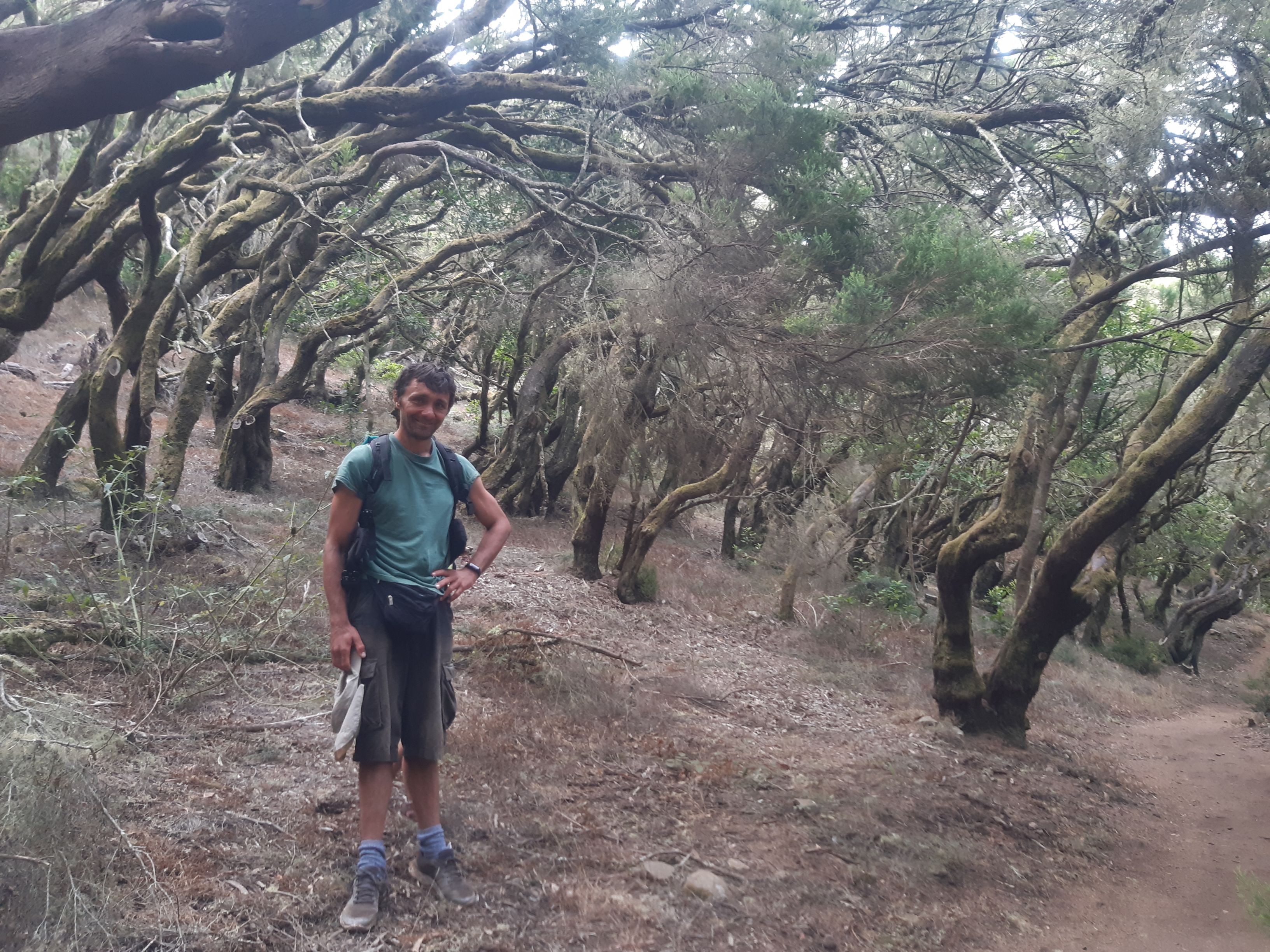
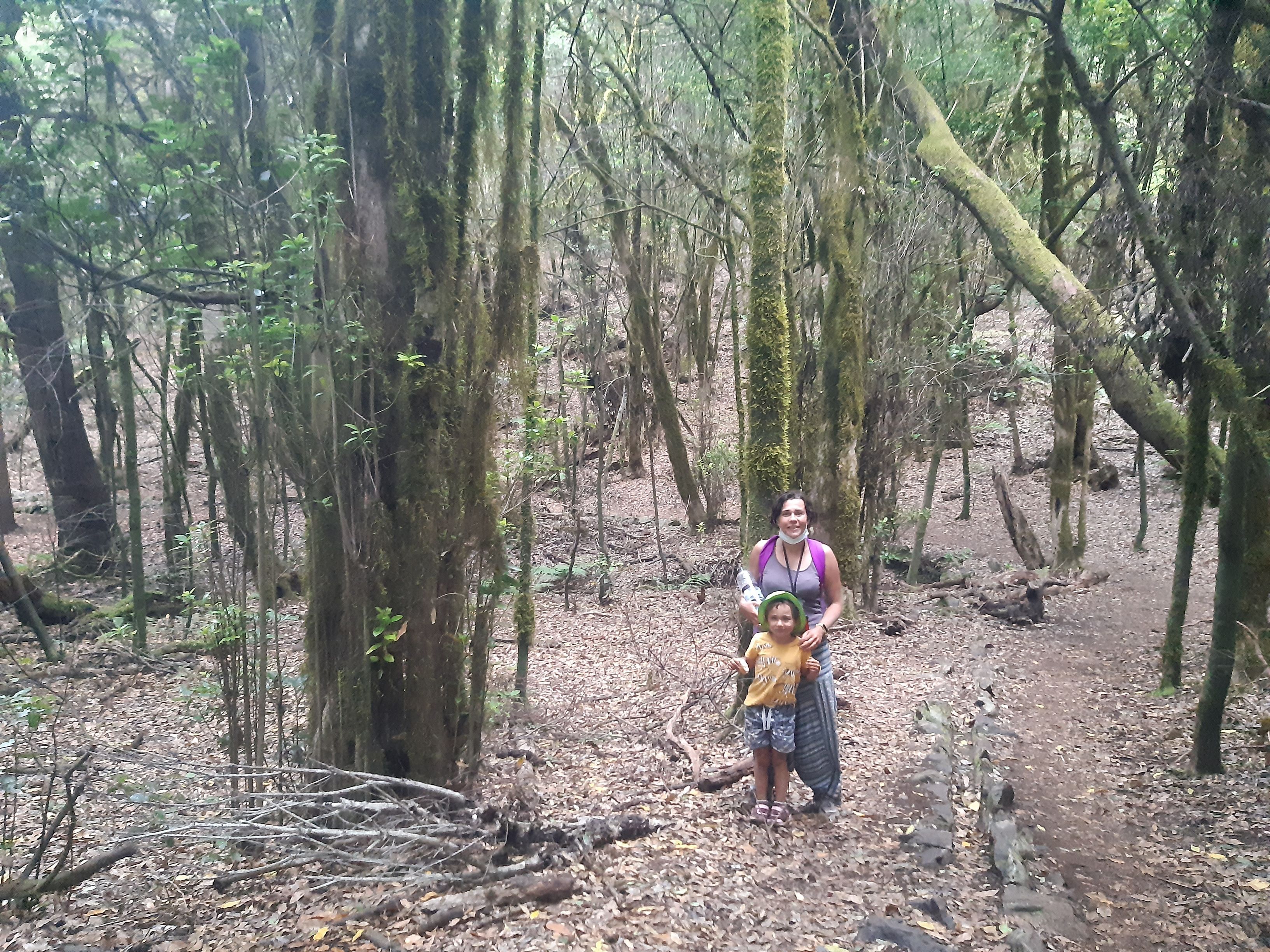
They make a great impression, but we finish the trip quite quickly because we make a big mistake - we don't bring sweaters with us. On the sunny side of the island, one can forget that such an item of clothing even exists, but twenty kilometers away, on the northern side of the island, it is 10 degrees cooler and humid. To avoid freezing, we almost run around the trail.

We anchor for a few days at Valle Gran Rey near a small beach under a cliff. We enjoy swimming there because it's quiet, peaceful, and the sand is soft. However, after a few days, we are informed that a part of the cliff further away collapsed into the water—fortunately, no one was hurt, but our enthusiasm for picnics under the cliff has faded.
There, we also experienced another potentially dangerous situation. We were sitting calmly in the boat, each of us occupied with our own activities, when suddenly we heard shouting and knocking on the hull. It turned out that the wind and tide had changed the boat's position, and the chain wrapped around the anchor and pulled it out, causing us to drift towards the rocks, which we hadn't noticed while sitting below deck. Luckily, Mark realized what was happening, and since the wave was too strong for their small dinghy, he put on fins and swam over to warn us. Later, we realized that the chain often gets tangled when the wind is weak and frequently changes direction (including in bays near cliffs). From then on, we started to worry about leaving the yacht at anchor and are reluctant to lose sight of it unless a neighboring yacht can keep an eye on it. Our belief was reinforced by a situation we learned about a year later that happened around the same time (read here).
Our new friends believe that the most beautiful of the islands is La Palma. Influenced by their stories, we decide to visit it. While the crossing goes without any particular issues, in the cramped marina, we accidentally hit a lighting pole. Full of guilt, we confess to the harbor master, who just waves it off—after observing others parking, we realize we weren't the first nor the last, and the port staff are expertly skilled at reinstalling the poles.
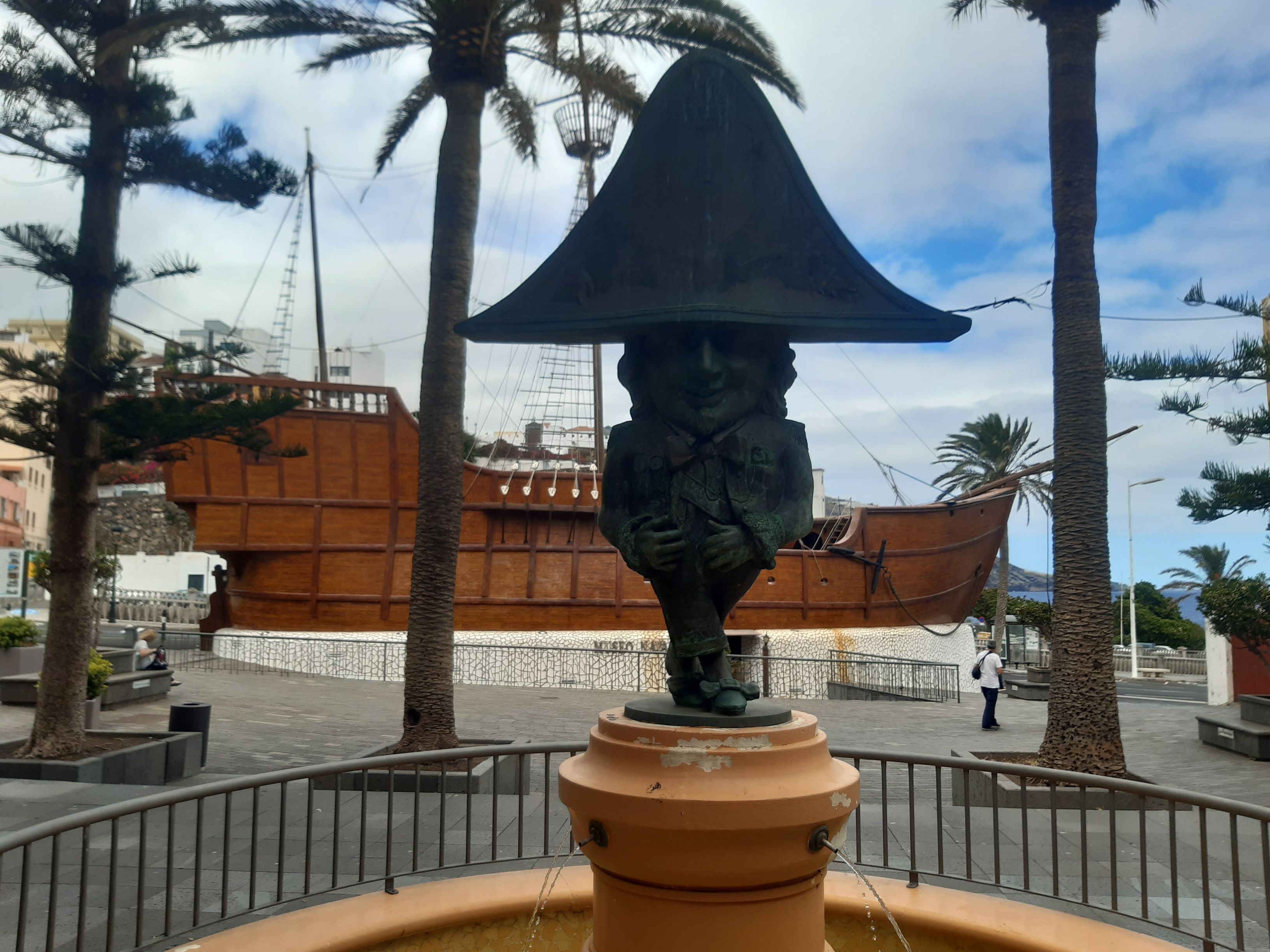
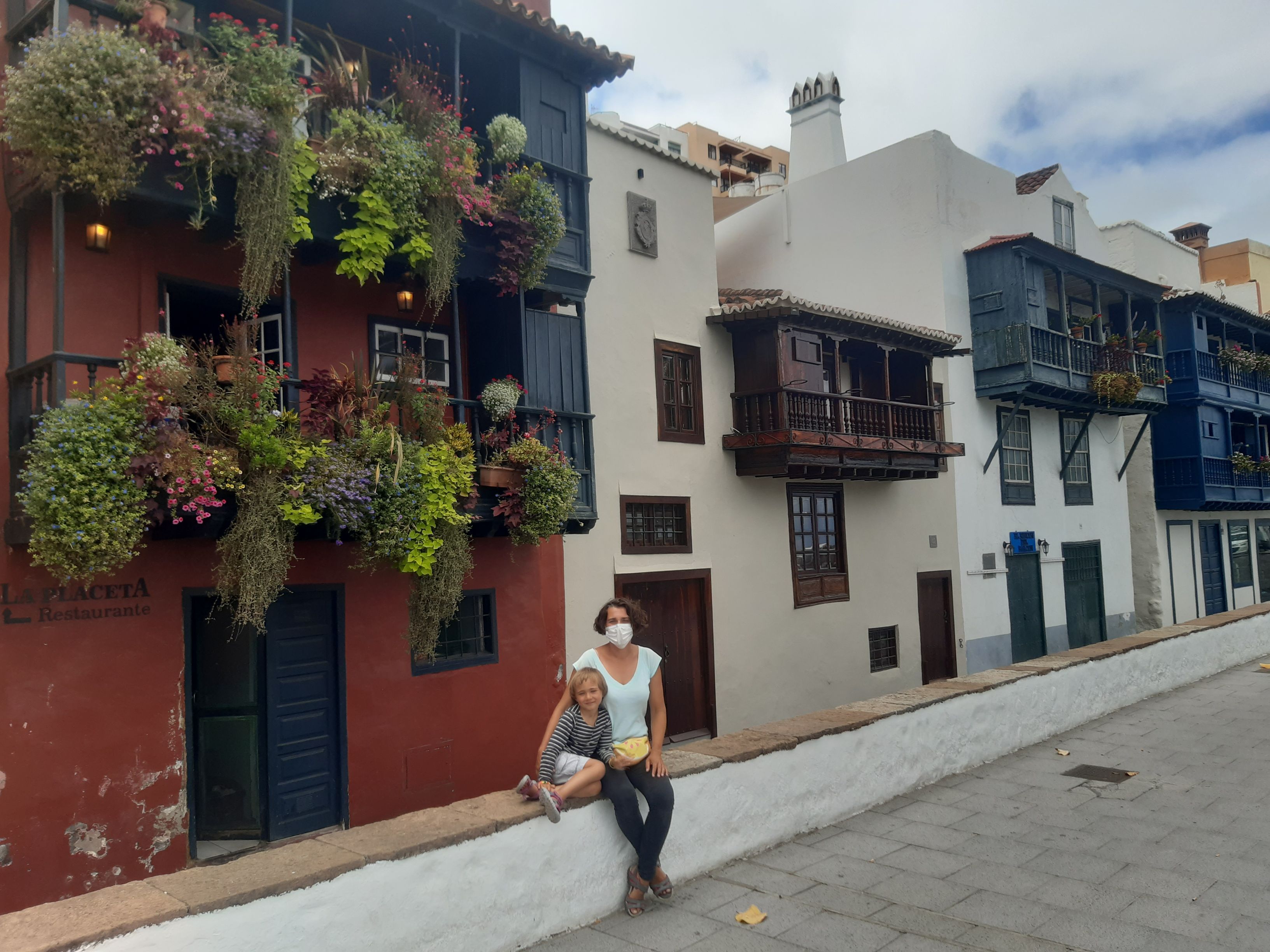
We start our tour from the beautiful city of Santa Cruz, and then we head to the Ruta de los Volcanoes. The route is quite challenging for under-four, but fortunately, the Little One manages it well (with some help from Dad in parts). Once again, the landscape is truly lunar.

Zuza tells Kama that the volcanoes erupted a long time ago, but it turns out that the last major eruption happened in the seventies (and another one a few months after our visit).
We end the trip at Salinas de Fuencaliente, where ocean salt is evaporated in special shallow pools.
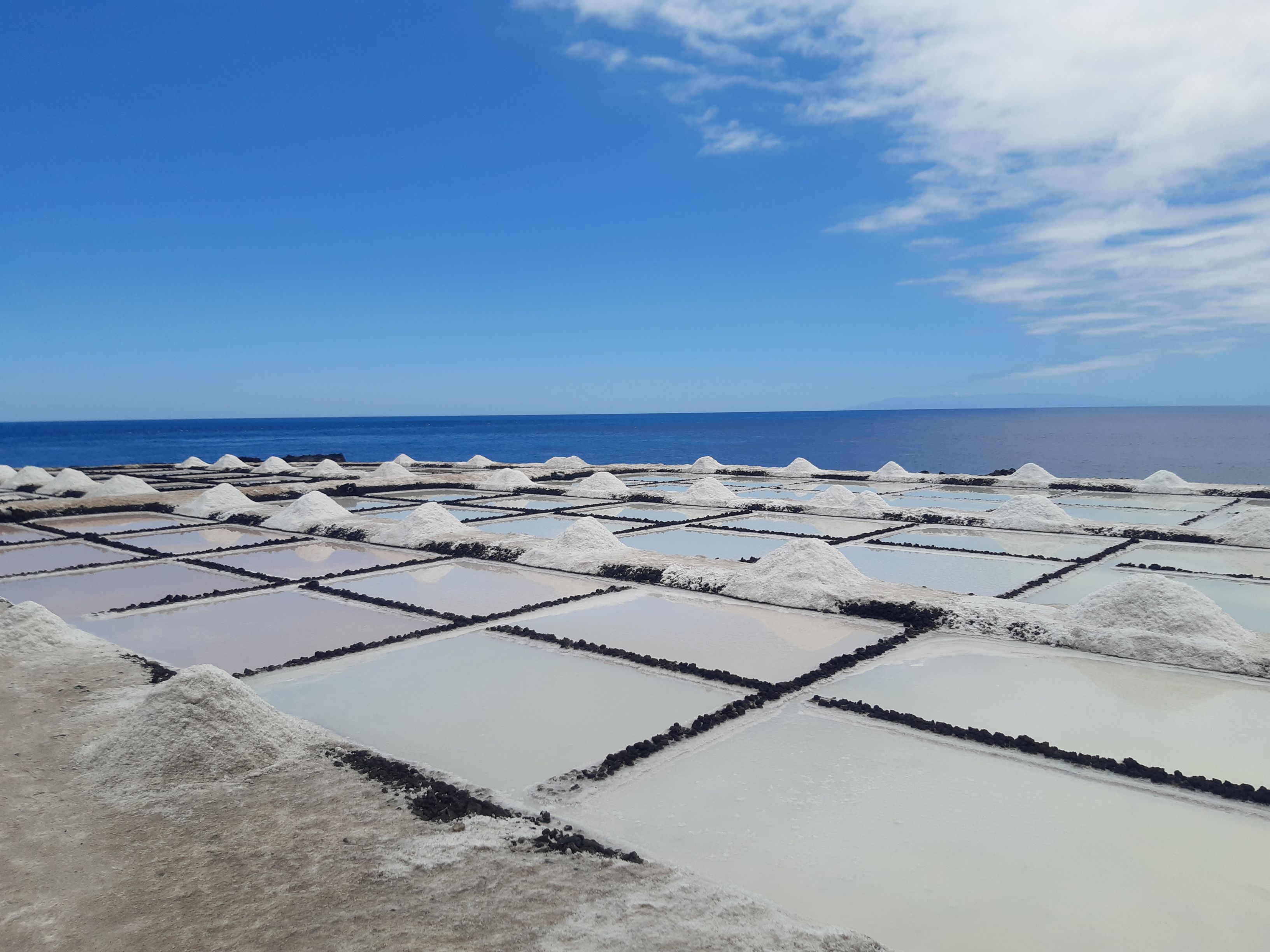
The next day, we head to the north of the island to swim in Piscinas de La Fajana - pools filled with tidal water.
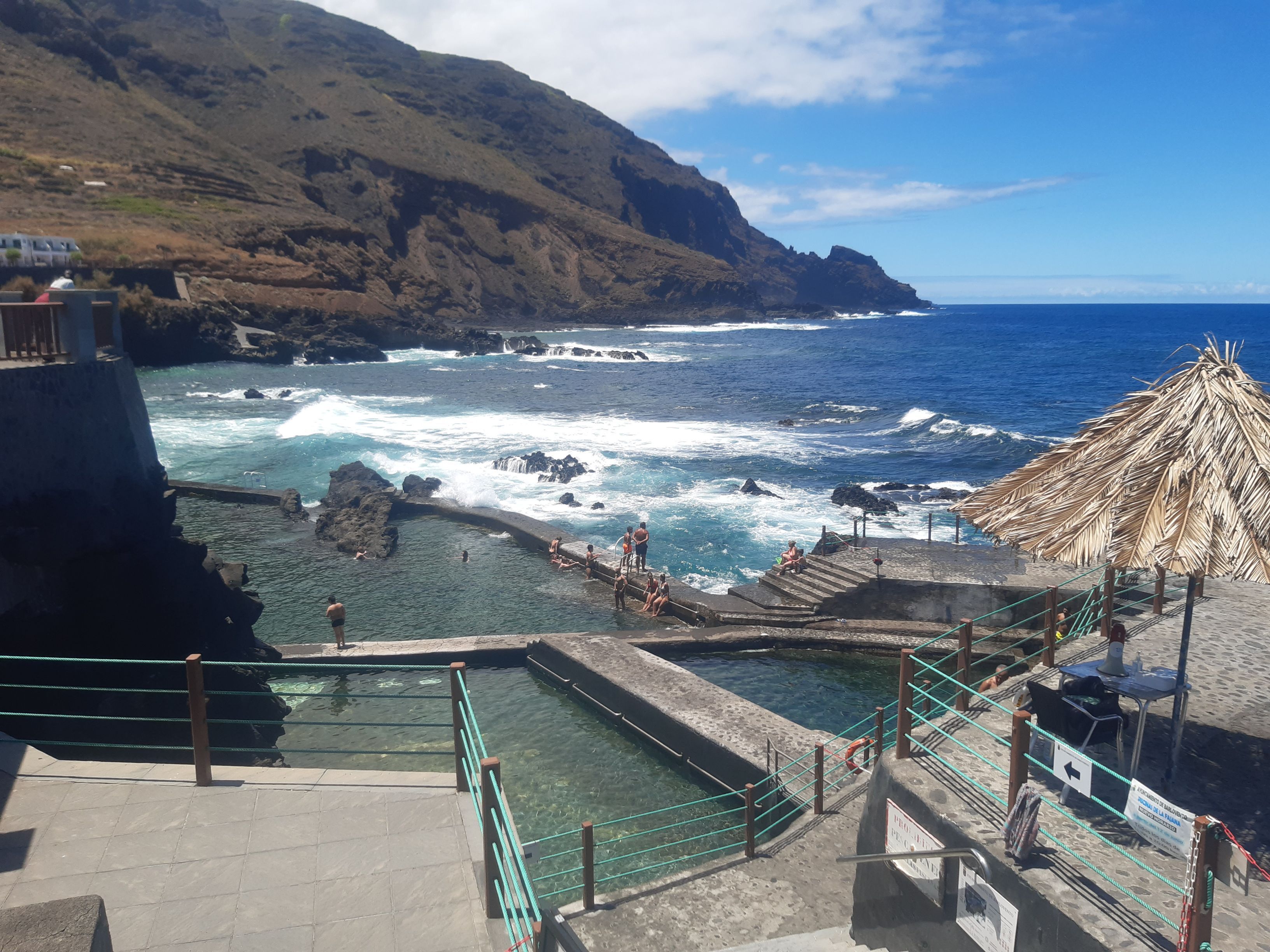
On the way, we pass banana plantations and have the opportunity to see how these fruits grow.

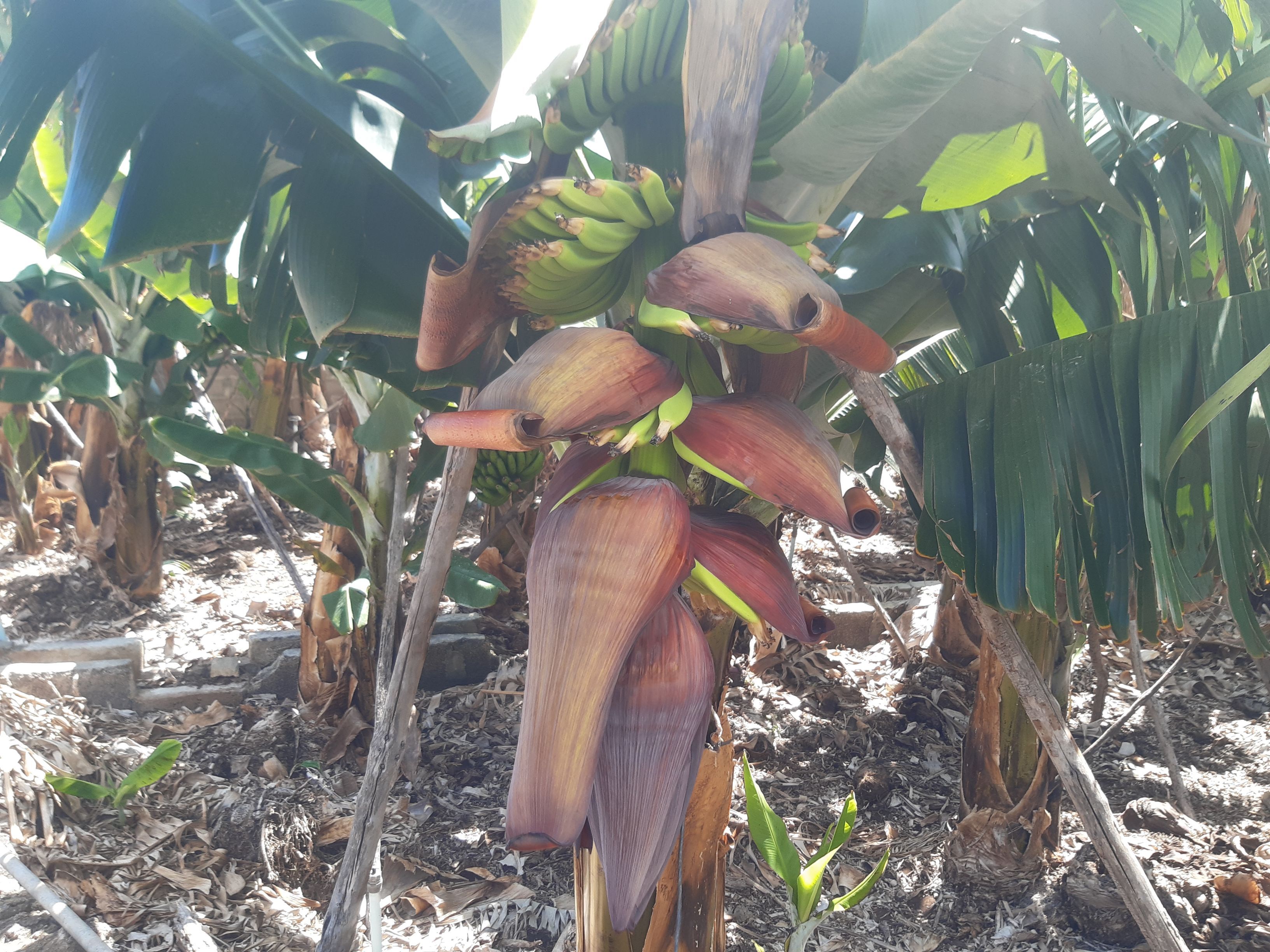

We also see blooming cotton, growing papayas, and eat lychee fruits straight from the tree.

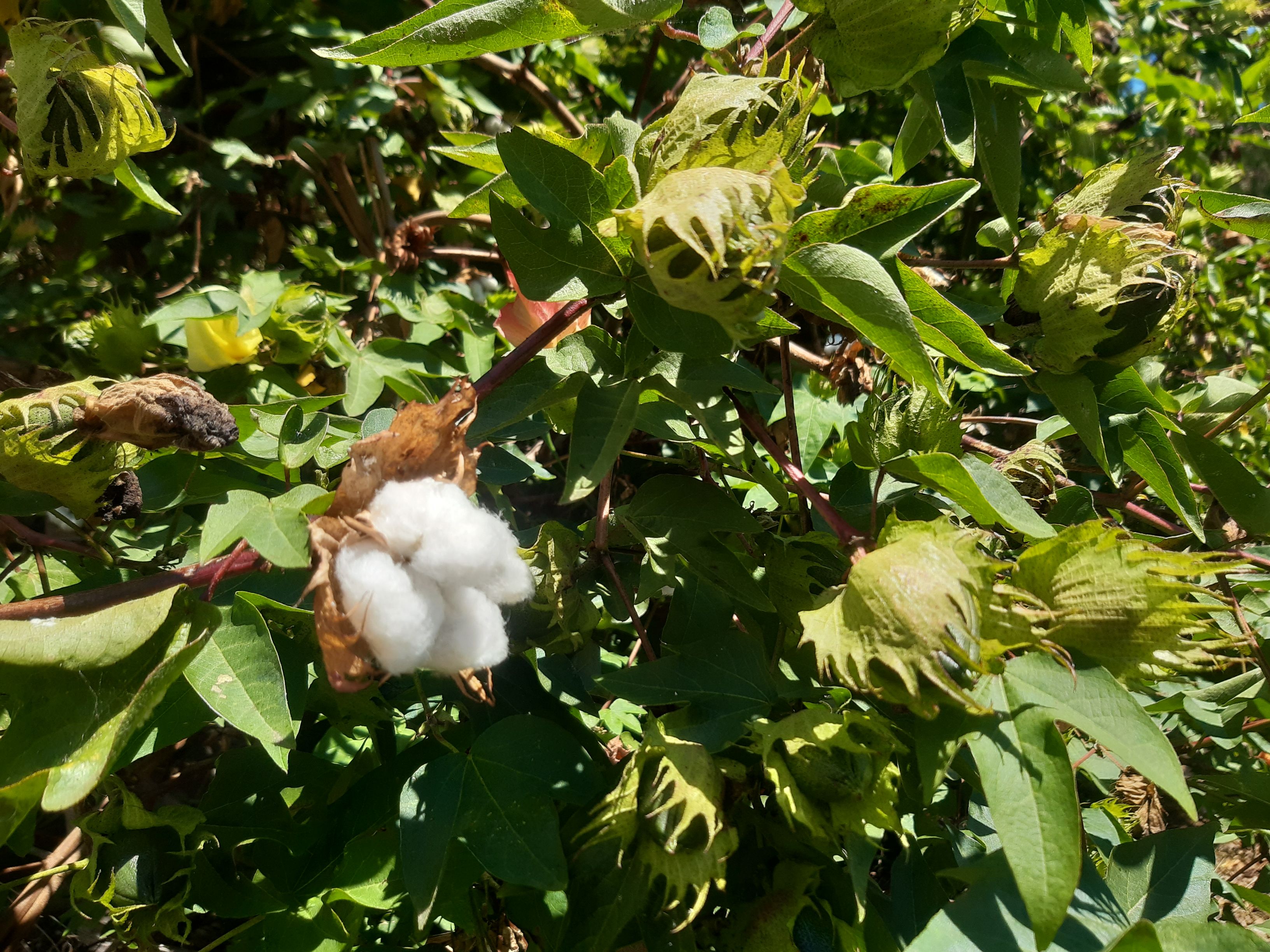
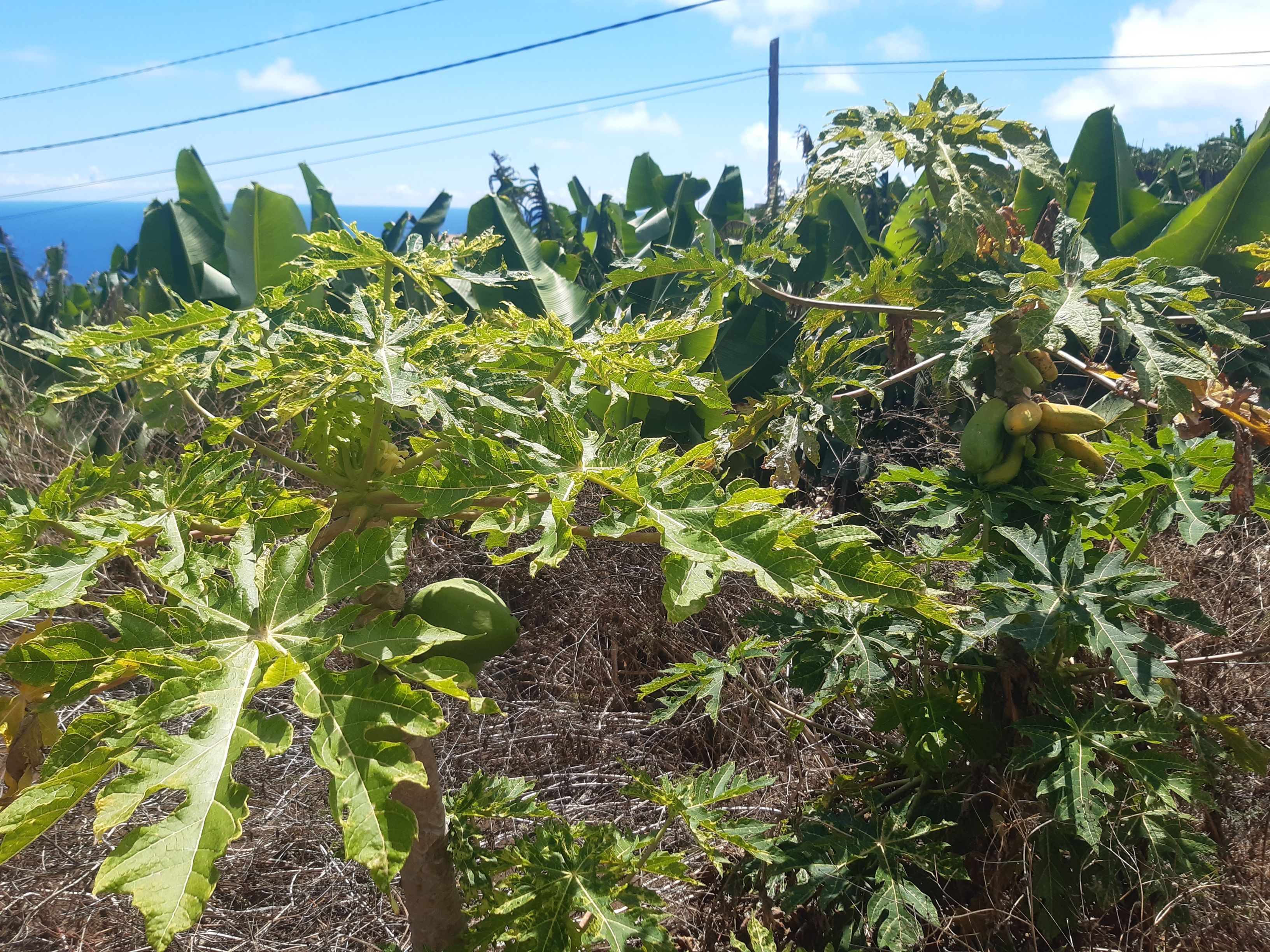

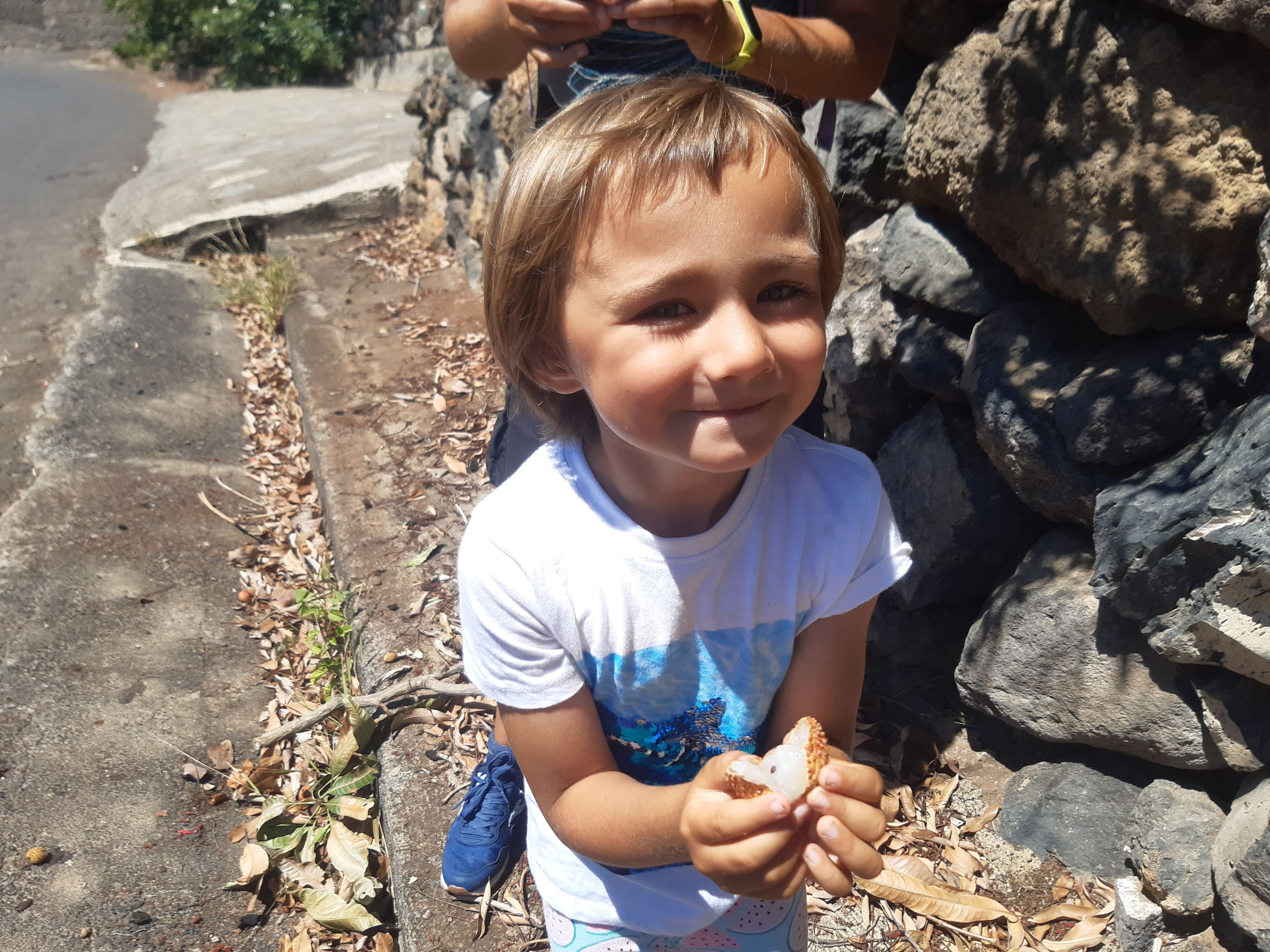
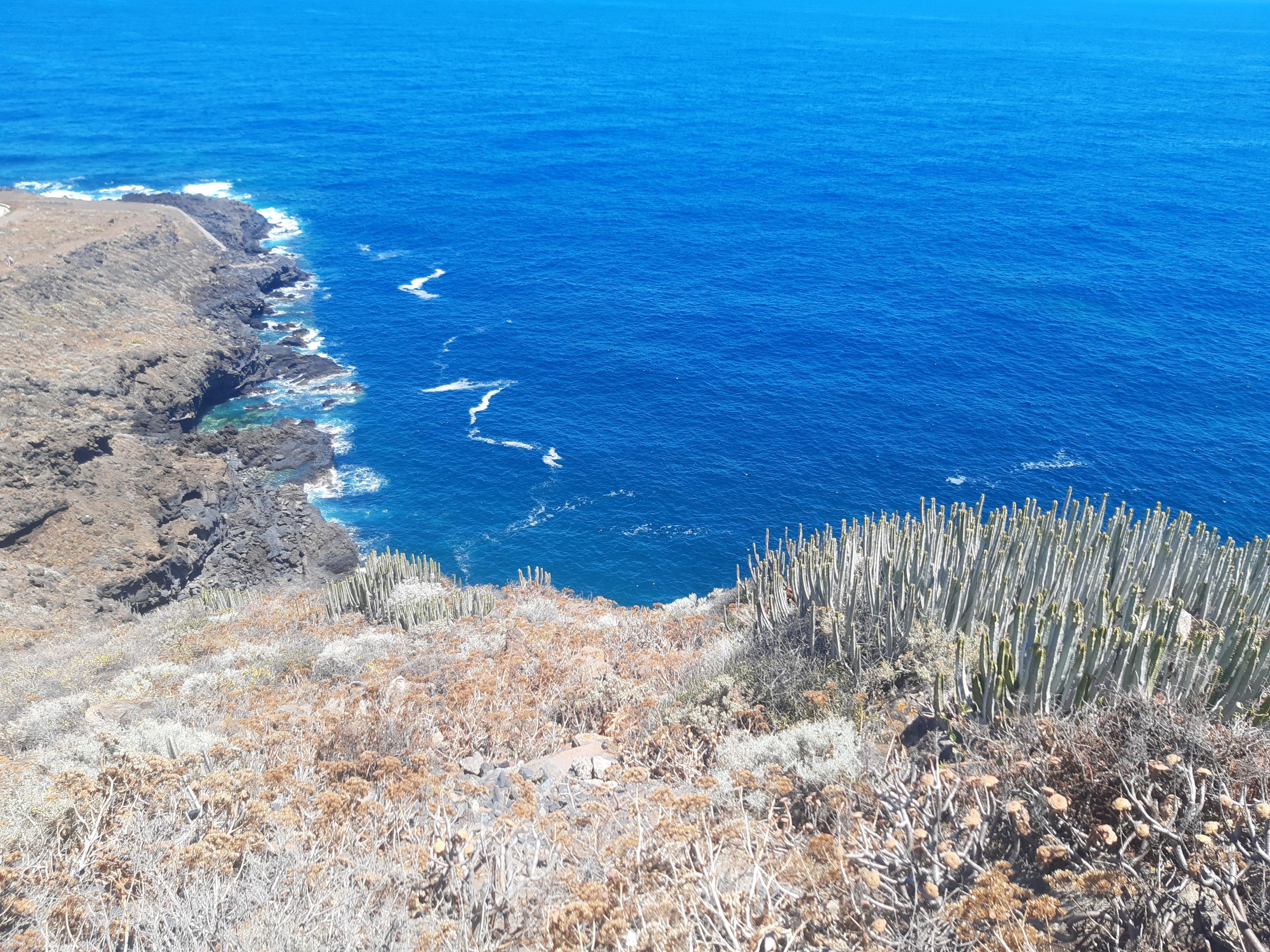
At the pools, we meet Karolina and Marcus. Marcus is half Polish, half German, who spent his entire childhood on Palma. Our kids play together while we listen to stories about what life is like here. We also learn why we had such trouble renting a car. Companies got rid of their previous cars, and due to COVID, the new ones that were ordered did not arrive. However, we were very keen to drive around the island by car, because although public transport here is quite good, we wouldn't have time to see all the places we wanted. So, for a hefty price, we manage to rent a Hyundai i10 with an automatic transmission and set off on a tour around the island.
The first stop is the astronomical observatories.
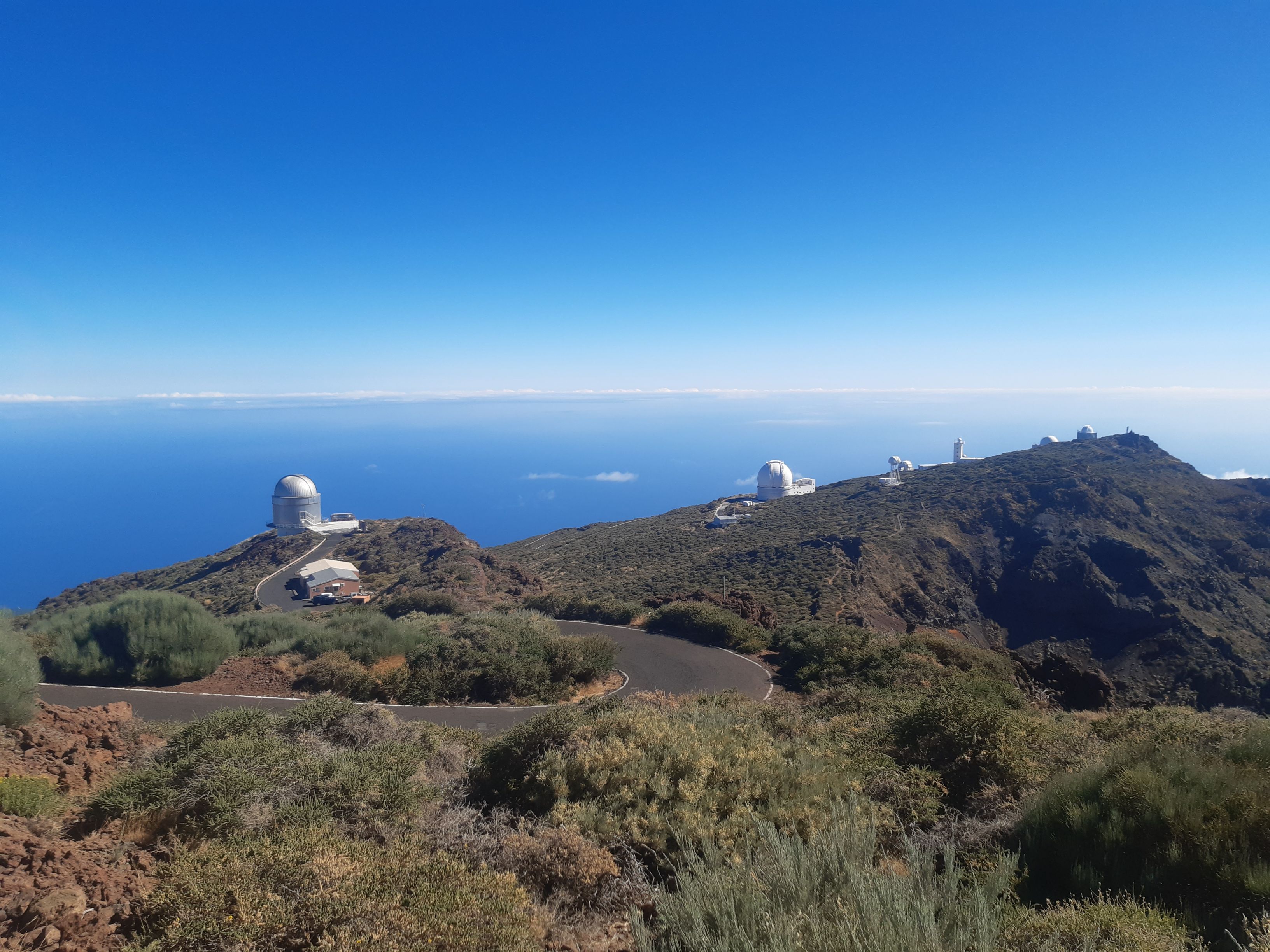
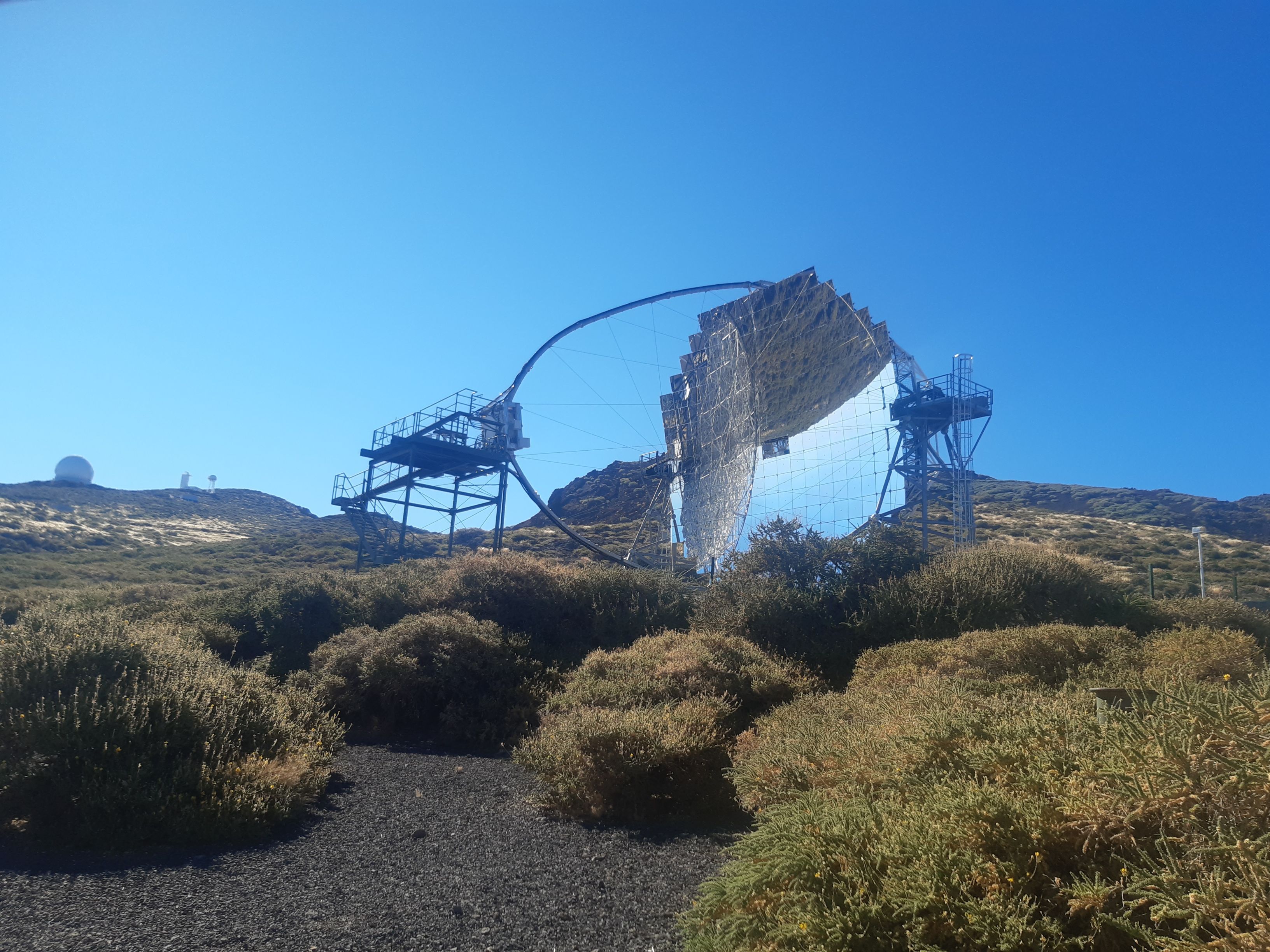

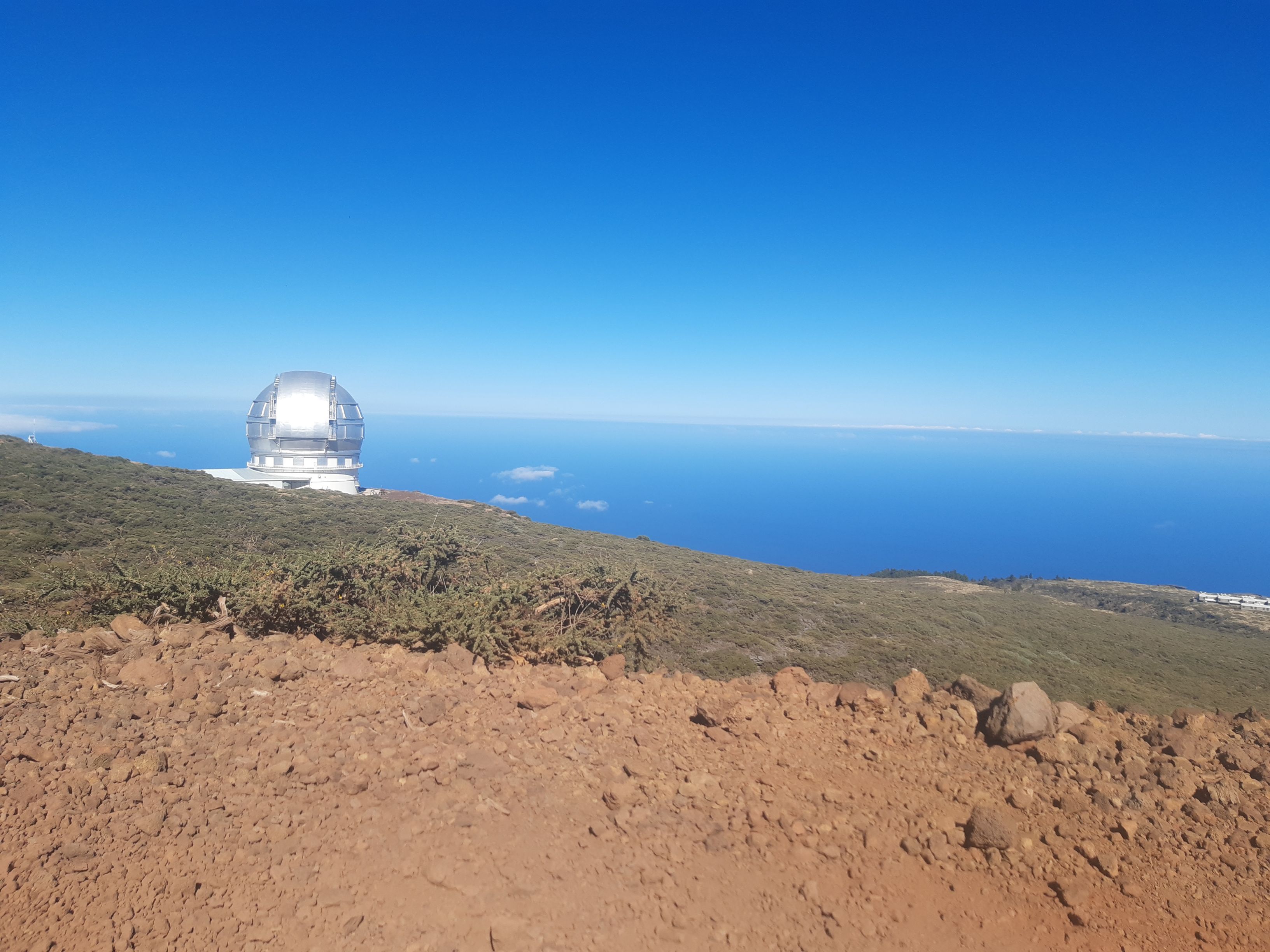
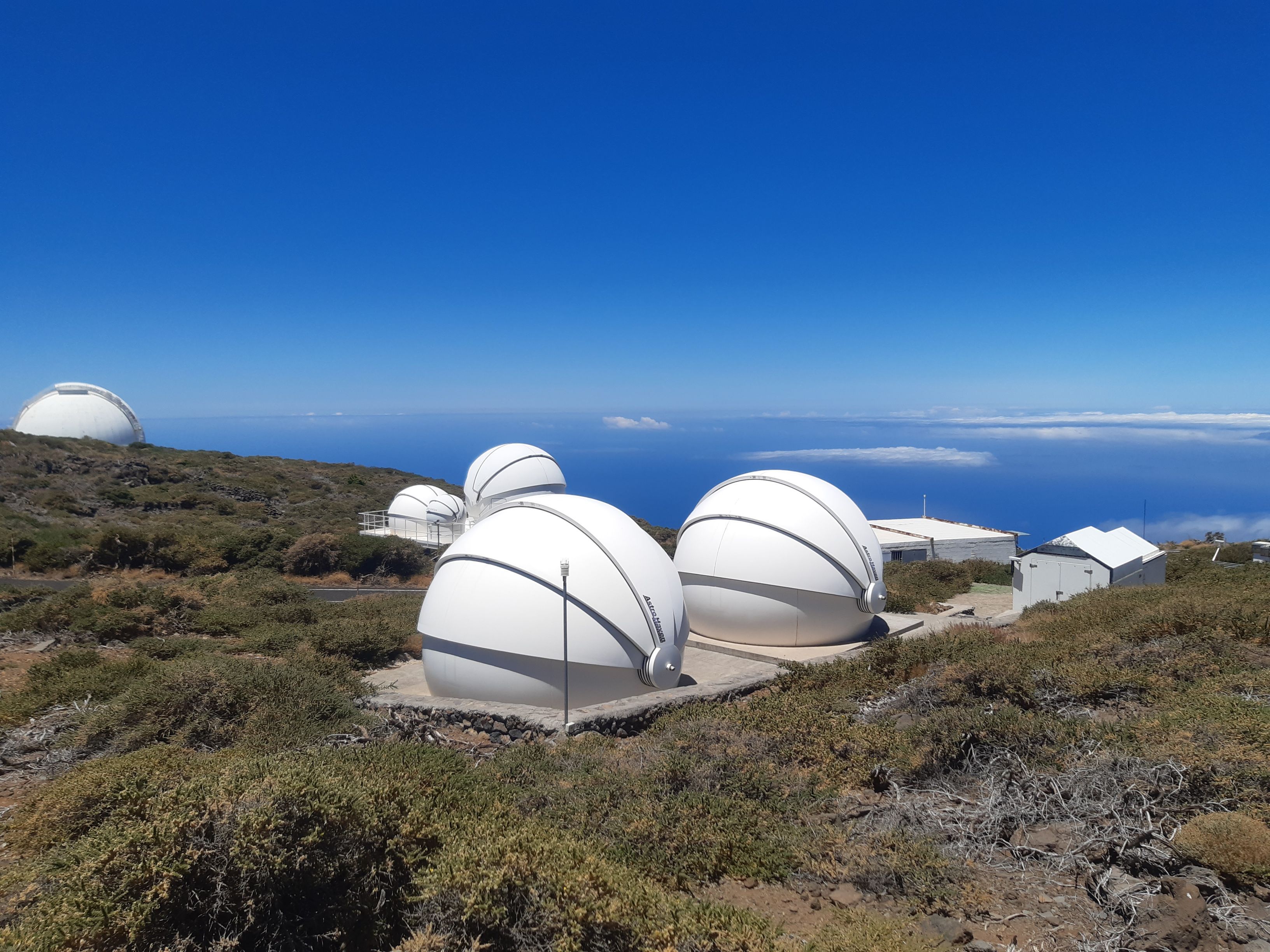
Due to the clean mountain air and low light pollution, Palma is one of the best places in Europe for observing the night sky. Astronomers from all over the continent come here.
Later, we go to see the volcano craters from above.
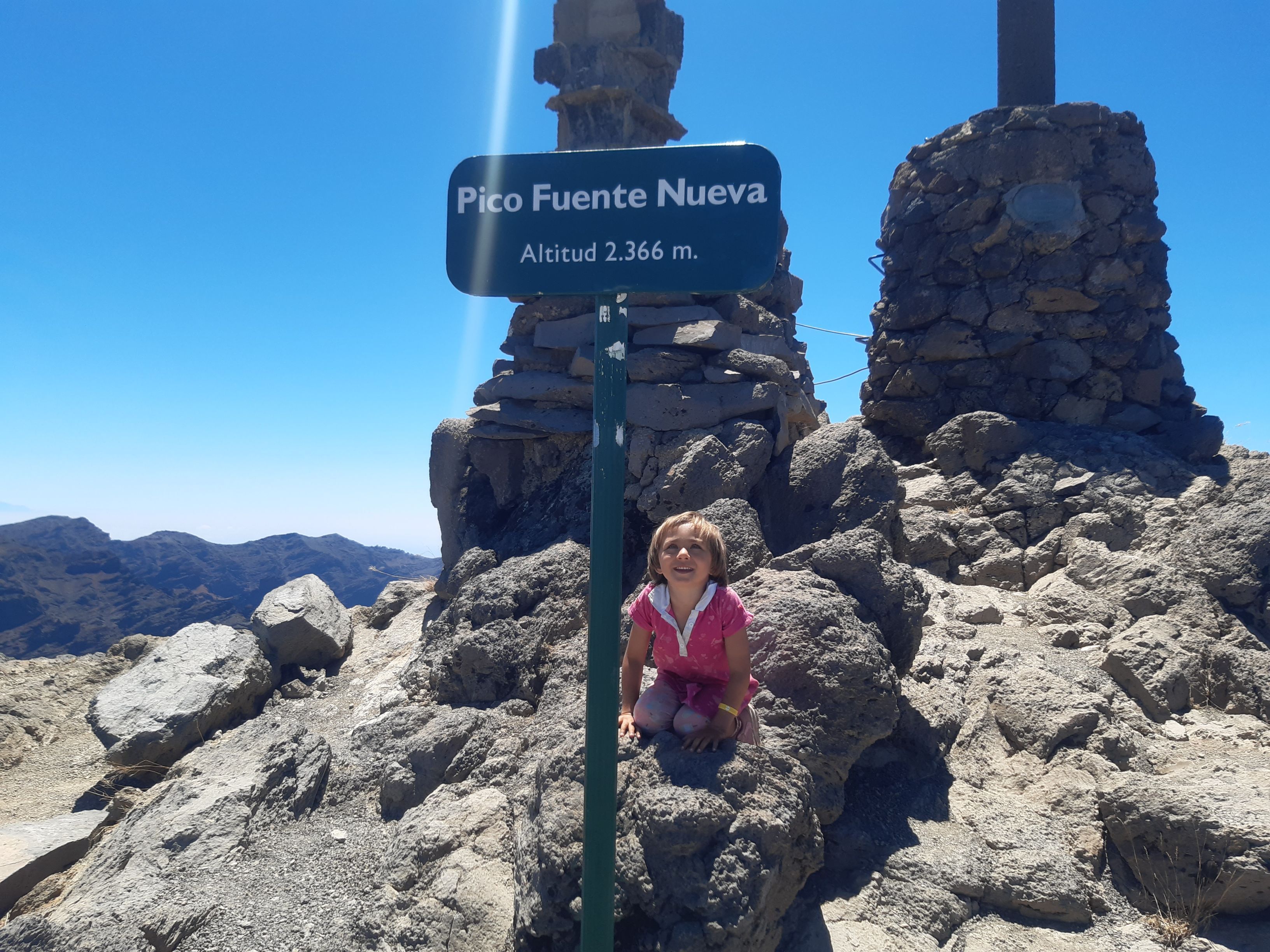

The next point of the trip is Cueva de Poris de la Candelaria, a fishing settlement built in a natural cave. We are perplexed because the road is narrow - it fits one car - and very steep. If meeting someone coming from the opposite direction, it is necessary to reverse to a passing place. In such conditions, a manual gearbox would come in handy, but to our relief, the Hyundai manages.
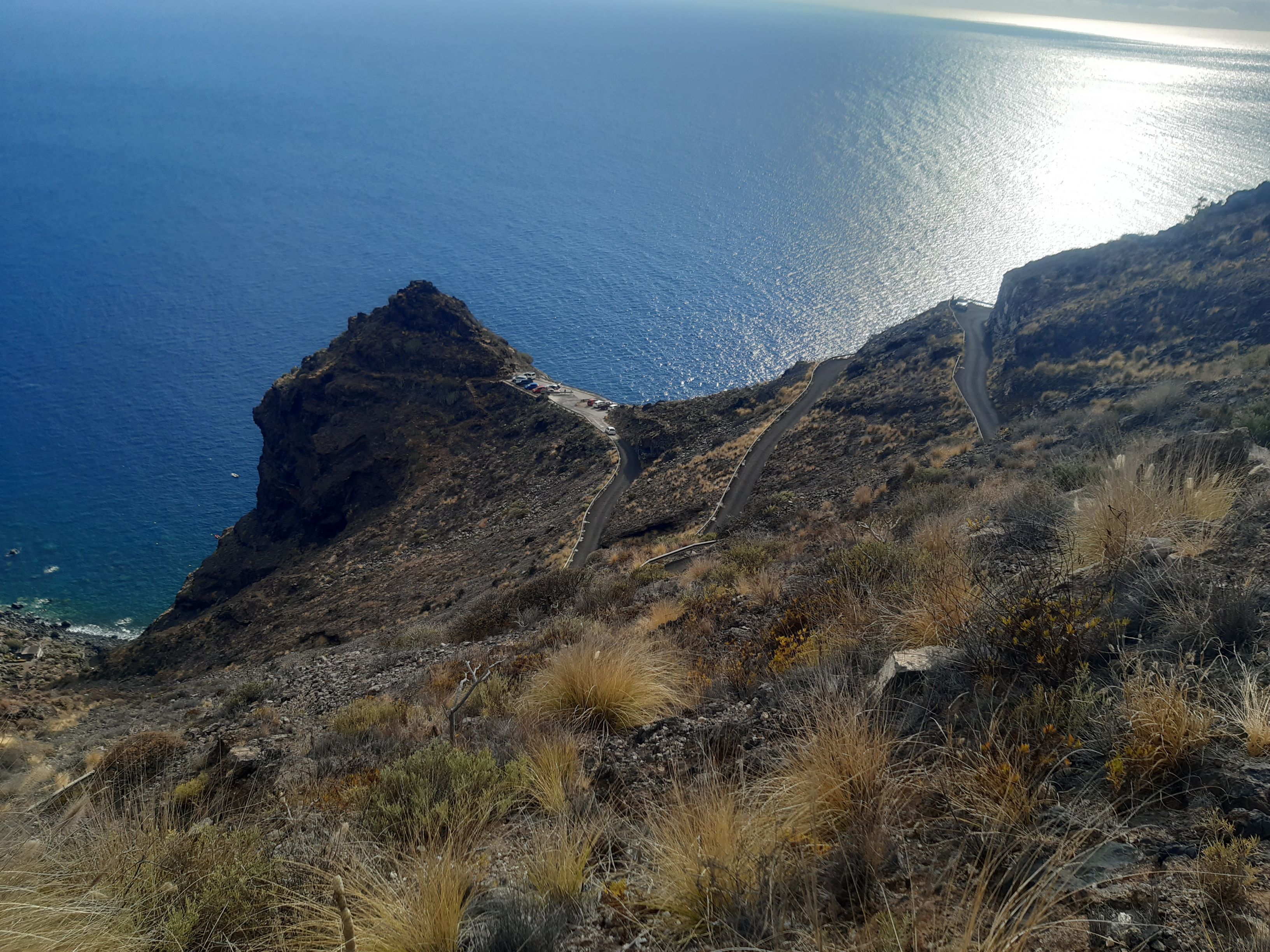
The place is really amazing.

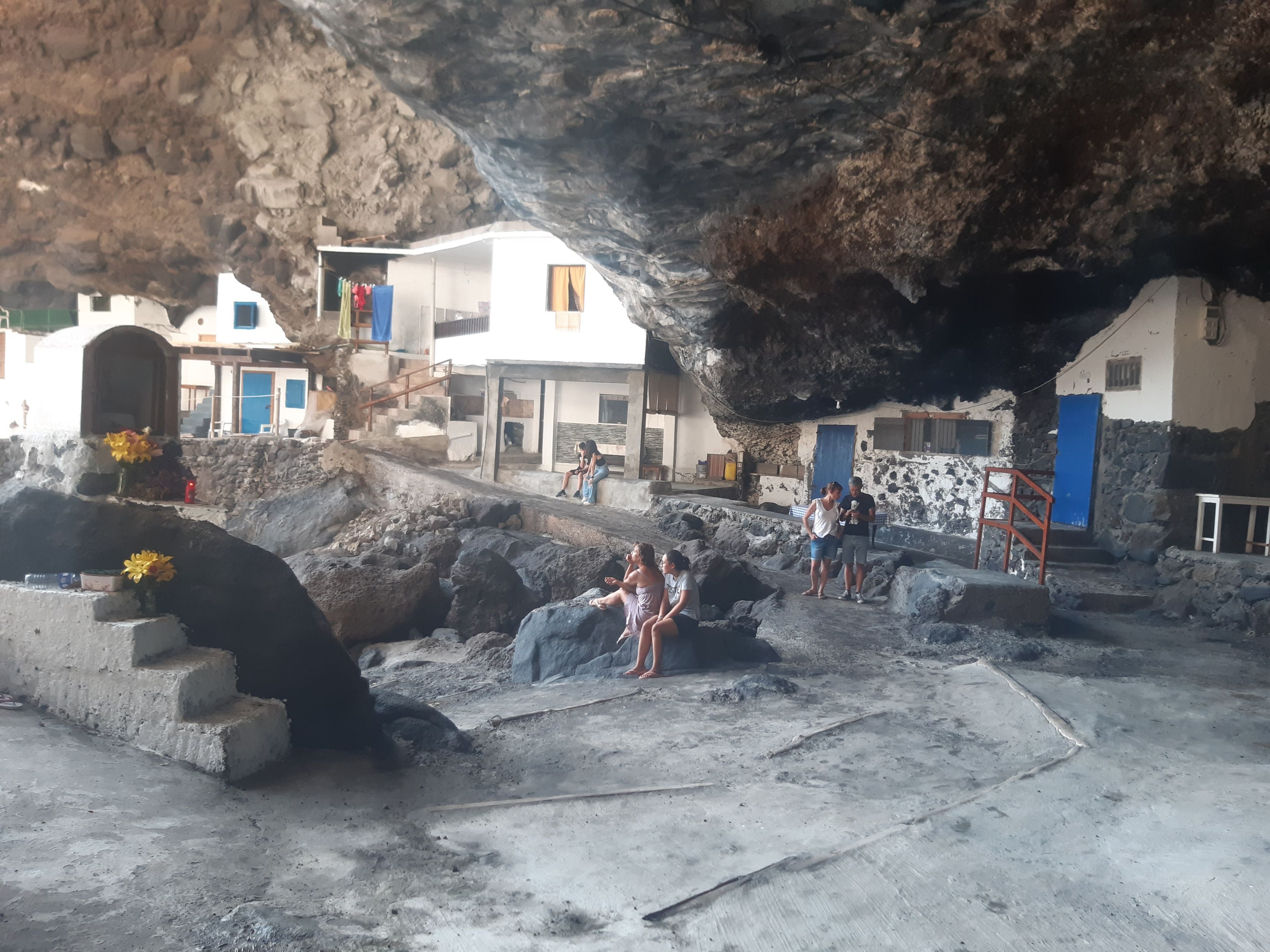

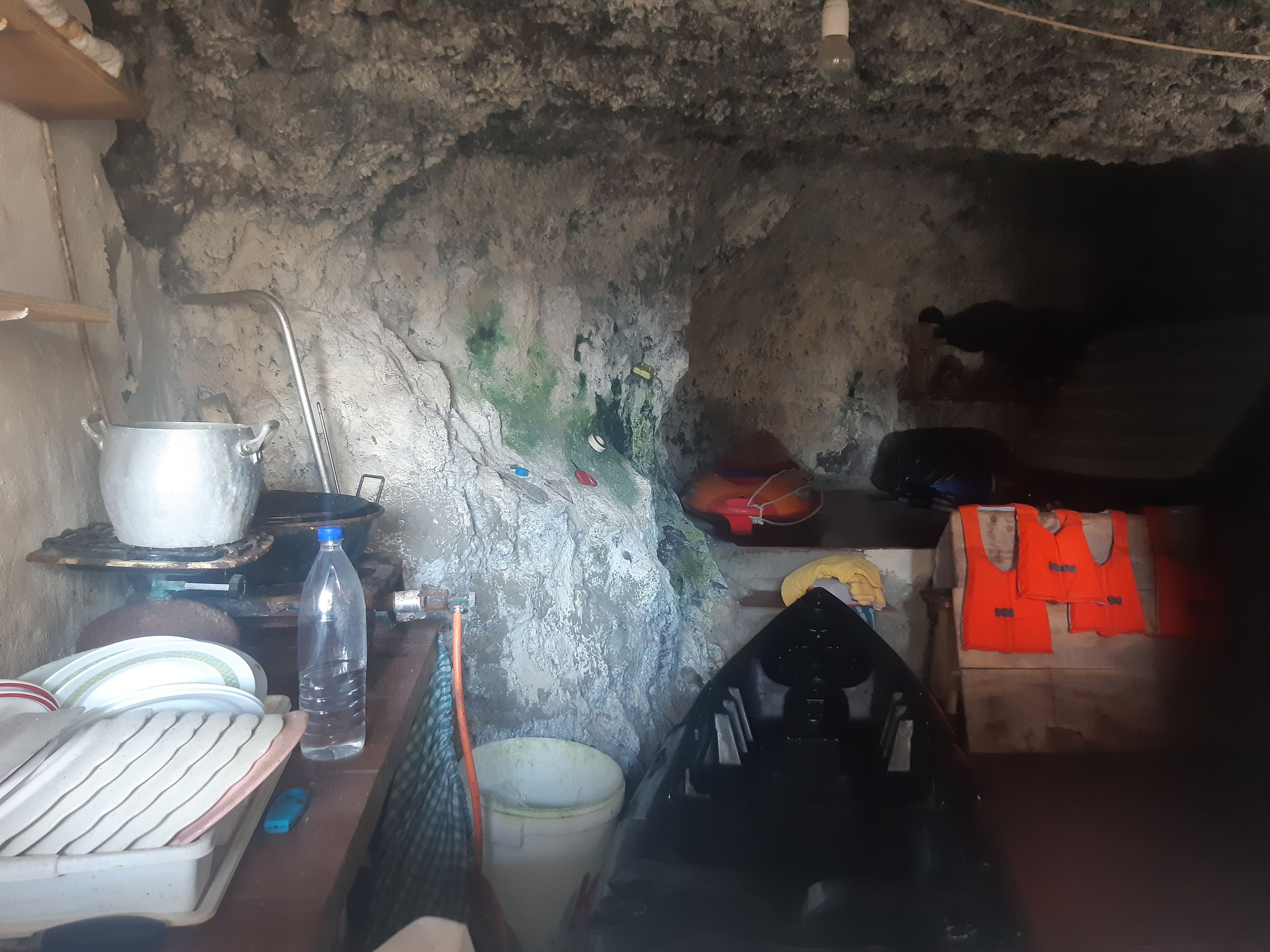

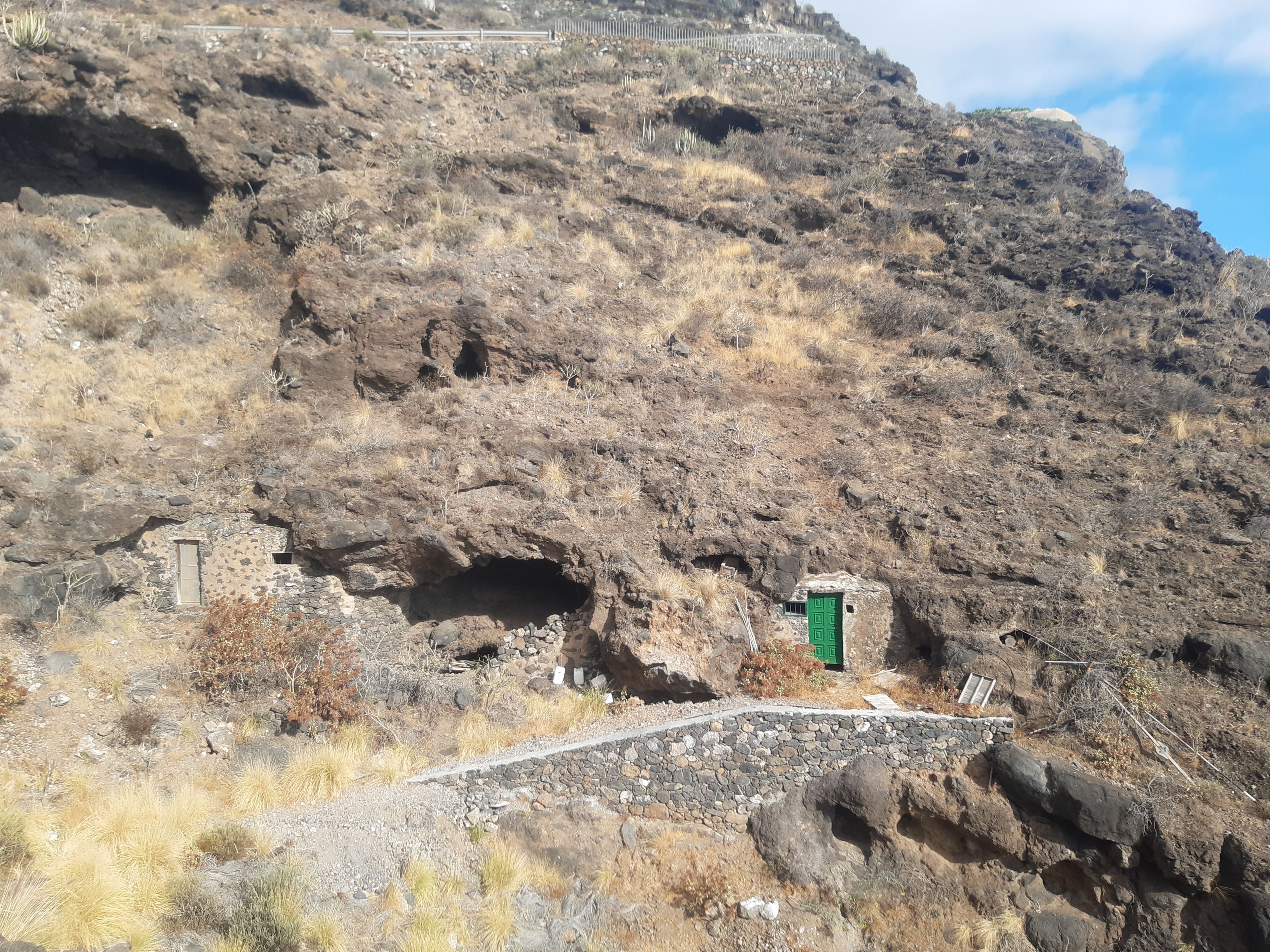
The last point of the program is Plaza la Glorieta. Kama considers it the most beautiful place of the entire trip, but the charming square also impresses adults.
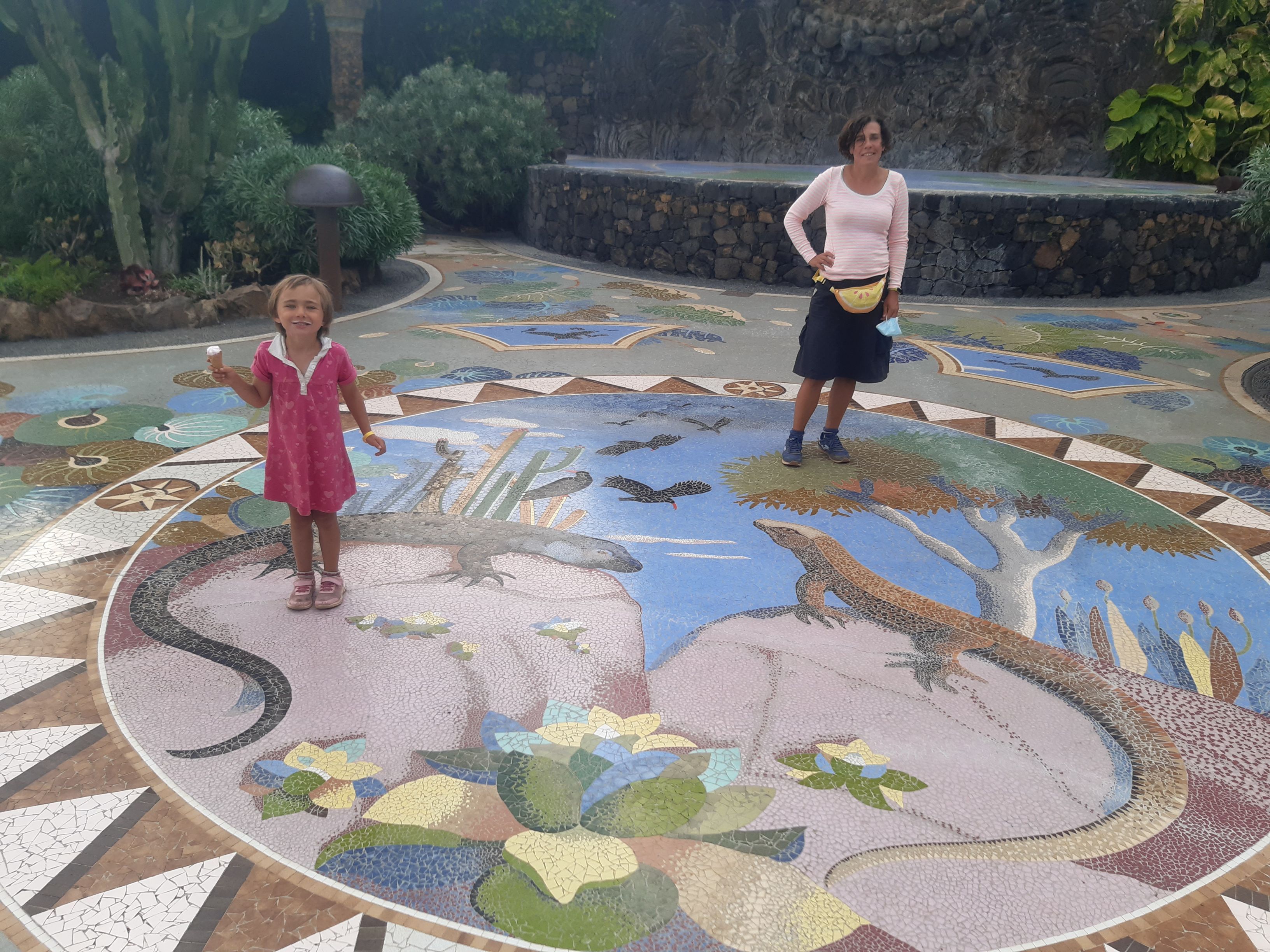
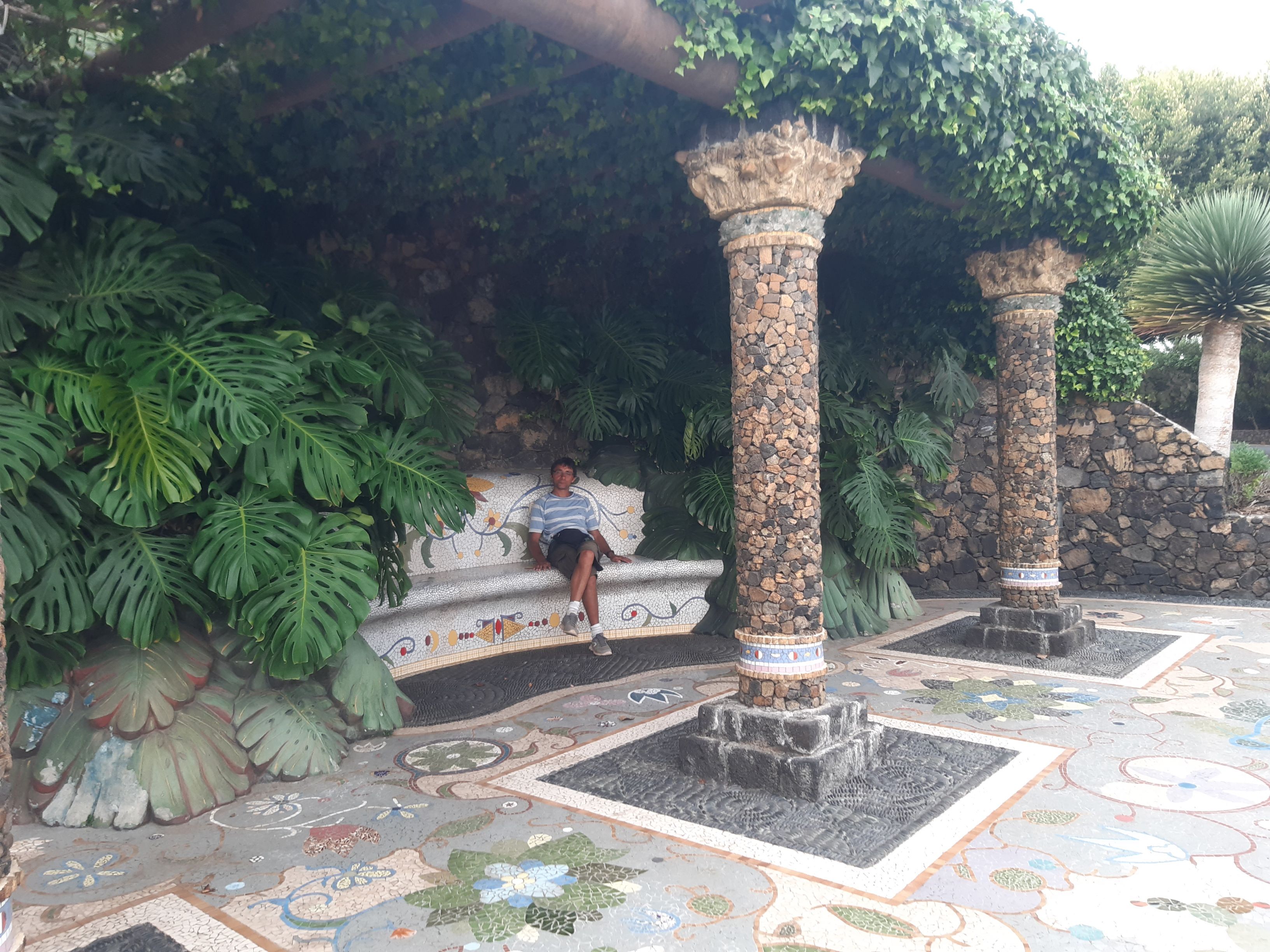
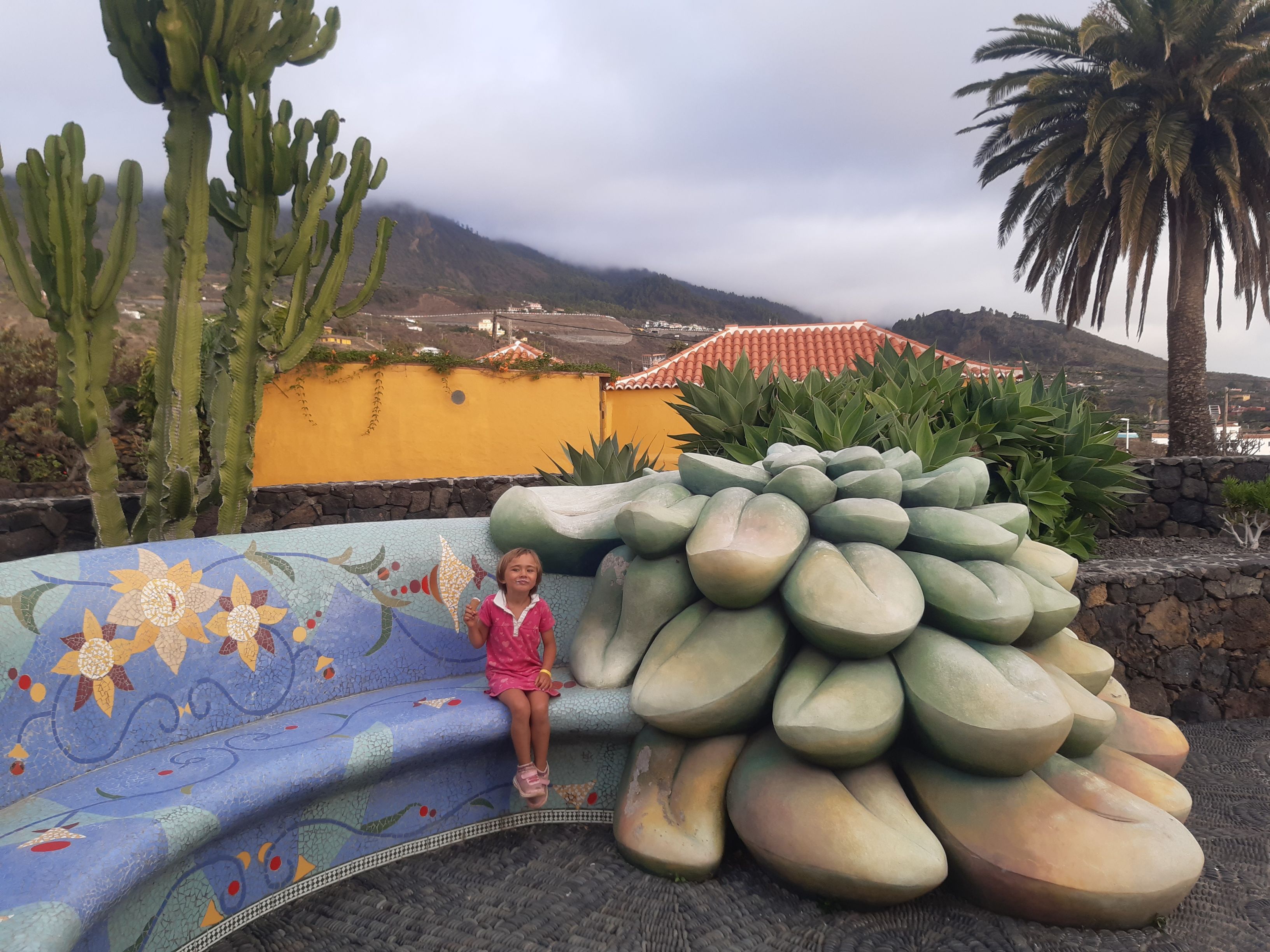
We returned the car and the next day set off for Cascada de los Tilos - the waterfall was large and beautiful, and the route leading to it was wide and comfortable, but we probably preferred the wild trek to the waterfall on Gomera.
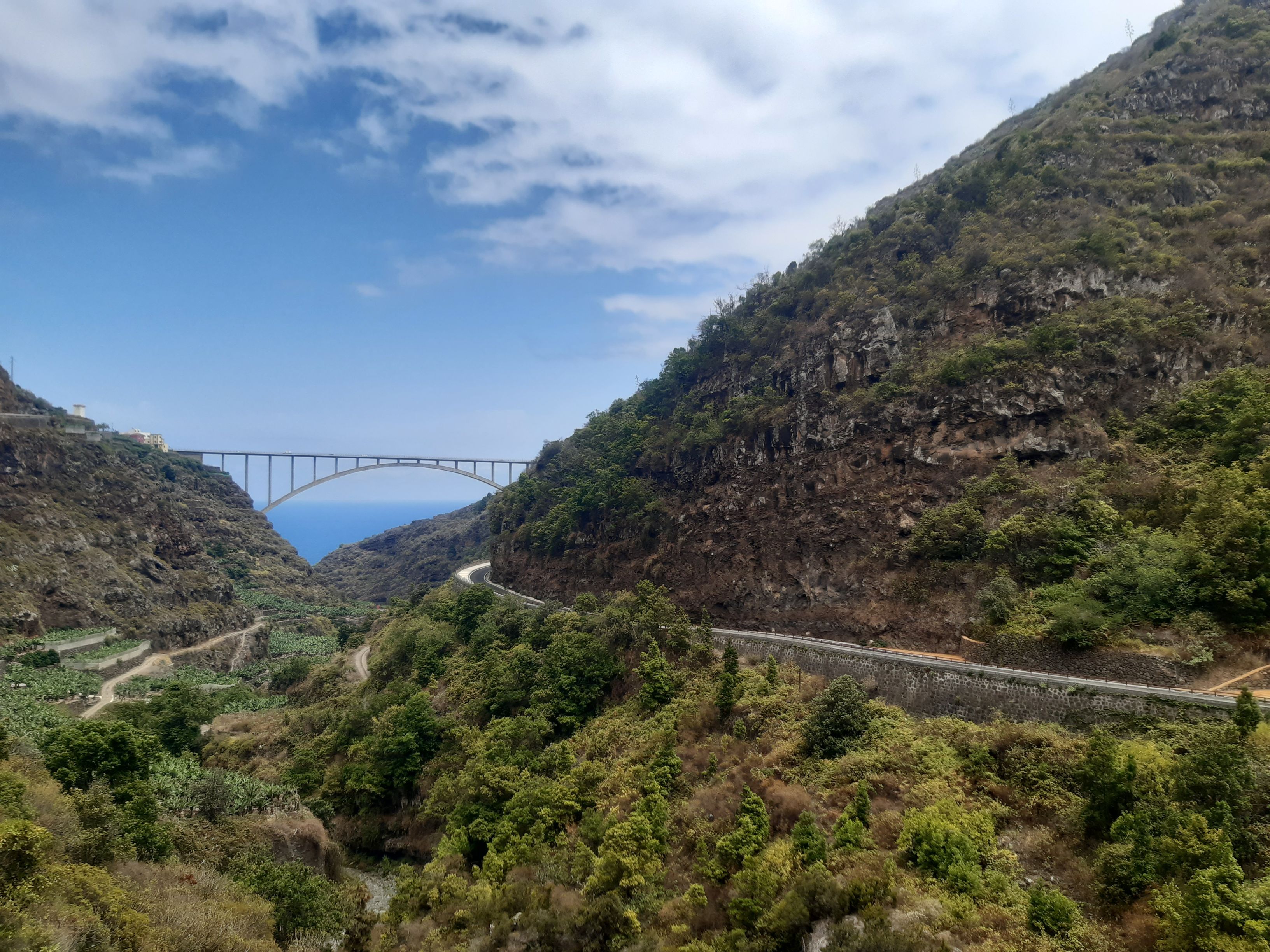
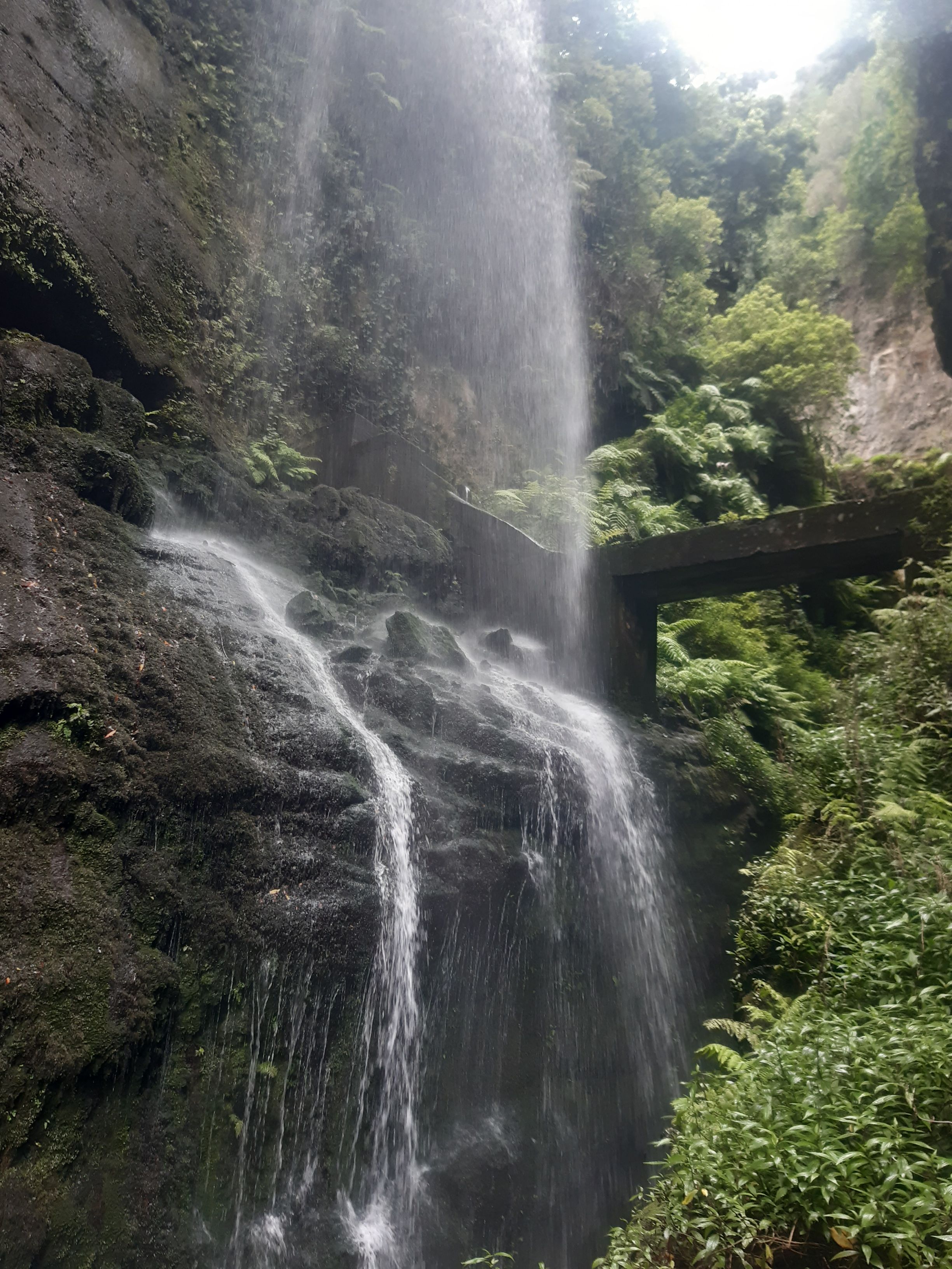
After an intense sightseeing, we waited for a good wind and set off back to La Restinga.
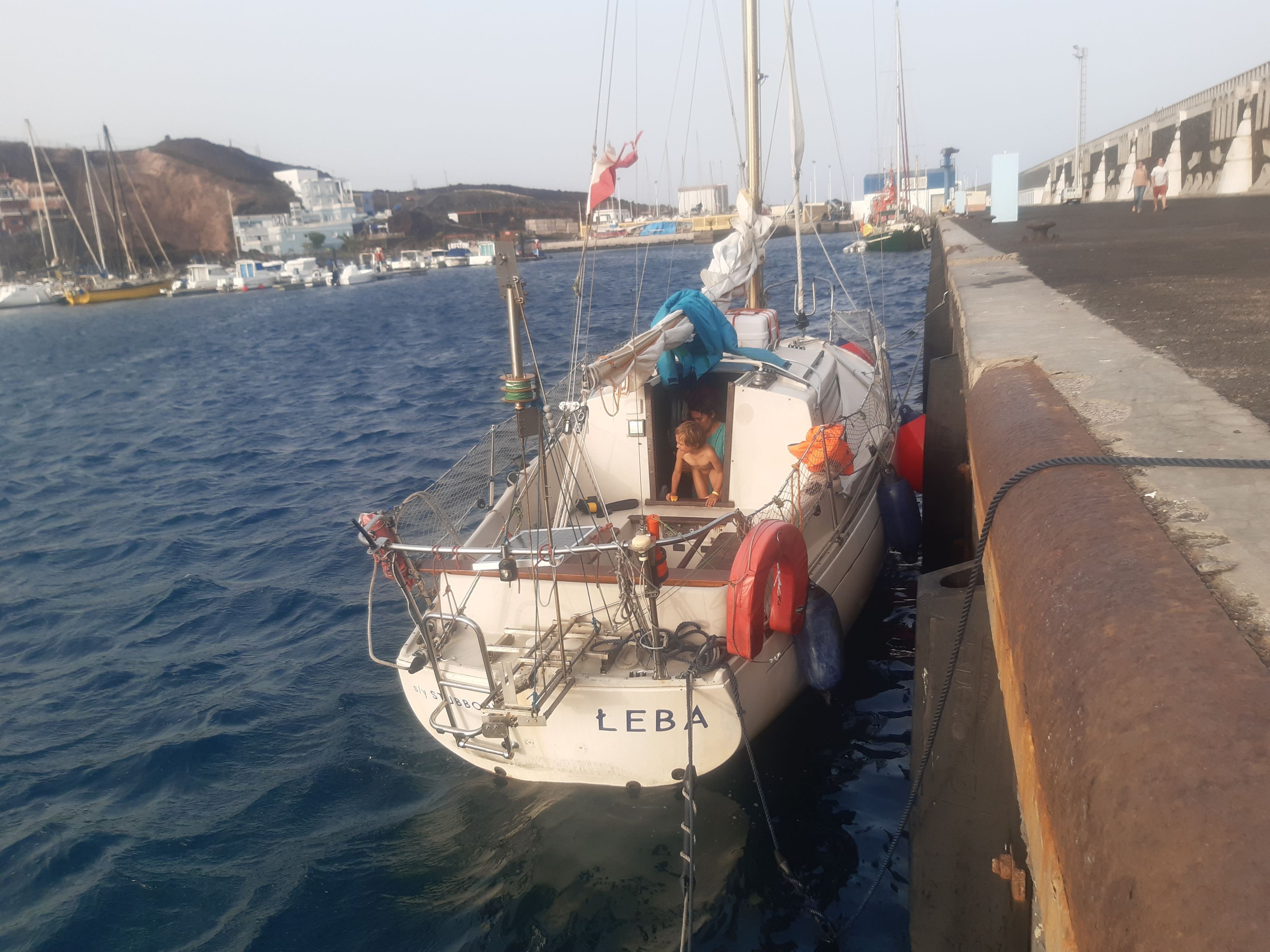
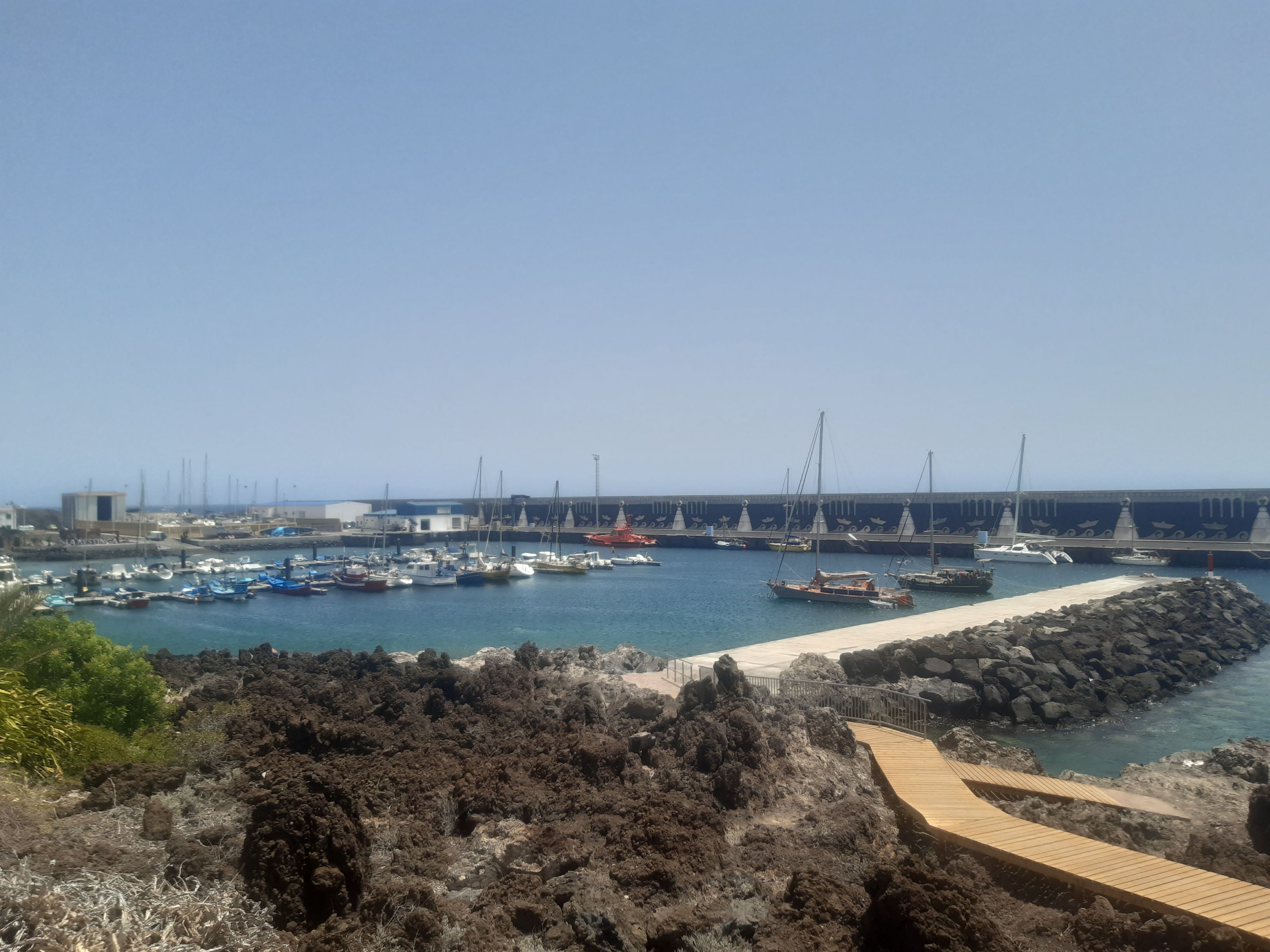
A surprise awaited us there. At one of the Gomera anchorages, a hardcore hippie boat caught our eyes - a large iron hull, a mast cobbled together from some planks, and a sail made out of something that looked like a tent fabric. The inhabitants didn't sail at all; at most they moved a few hundred meters to be better sheltered from the wind.
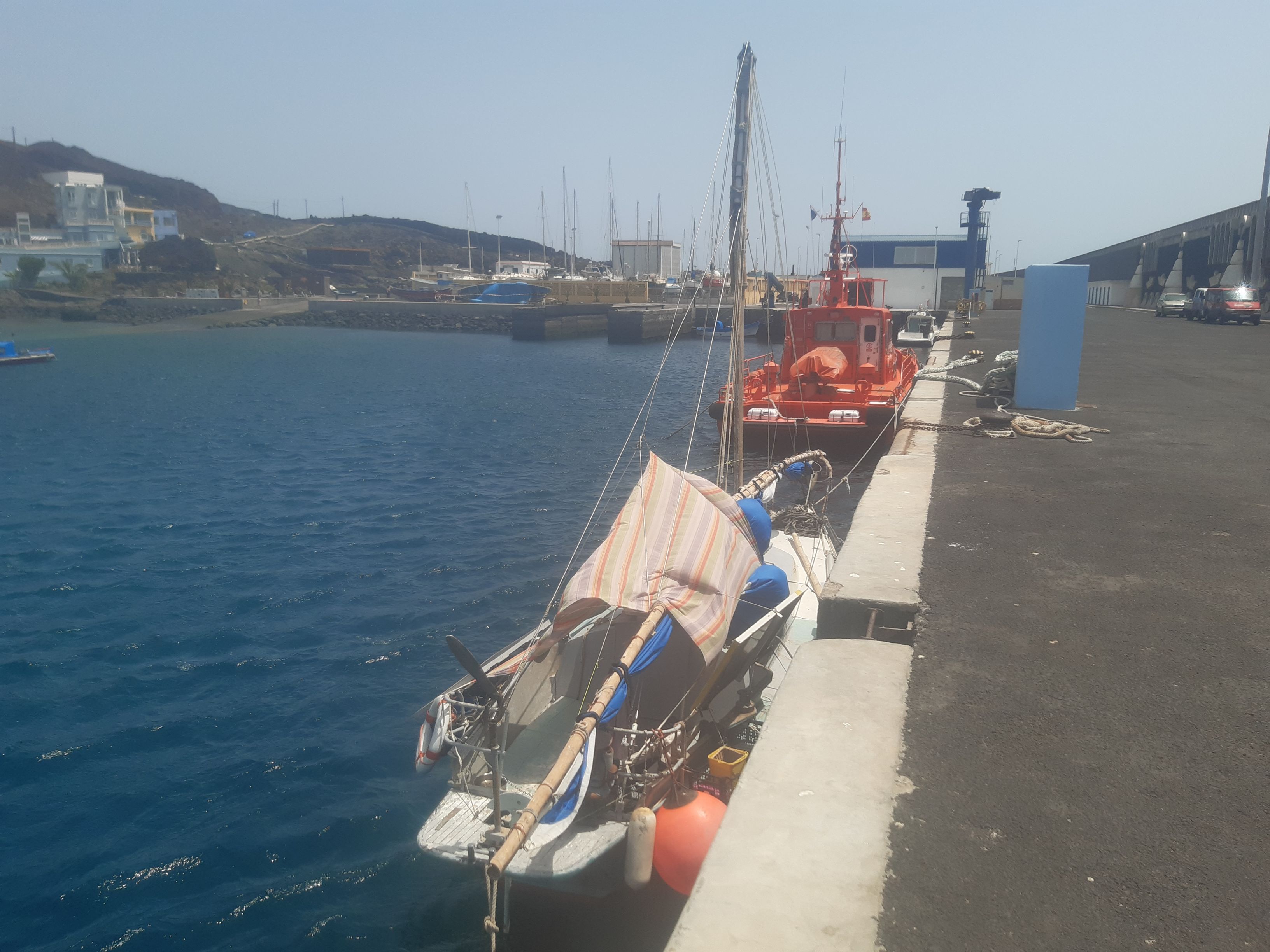
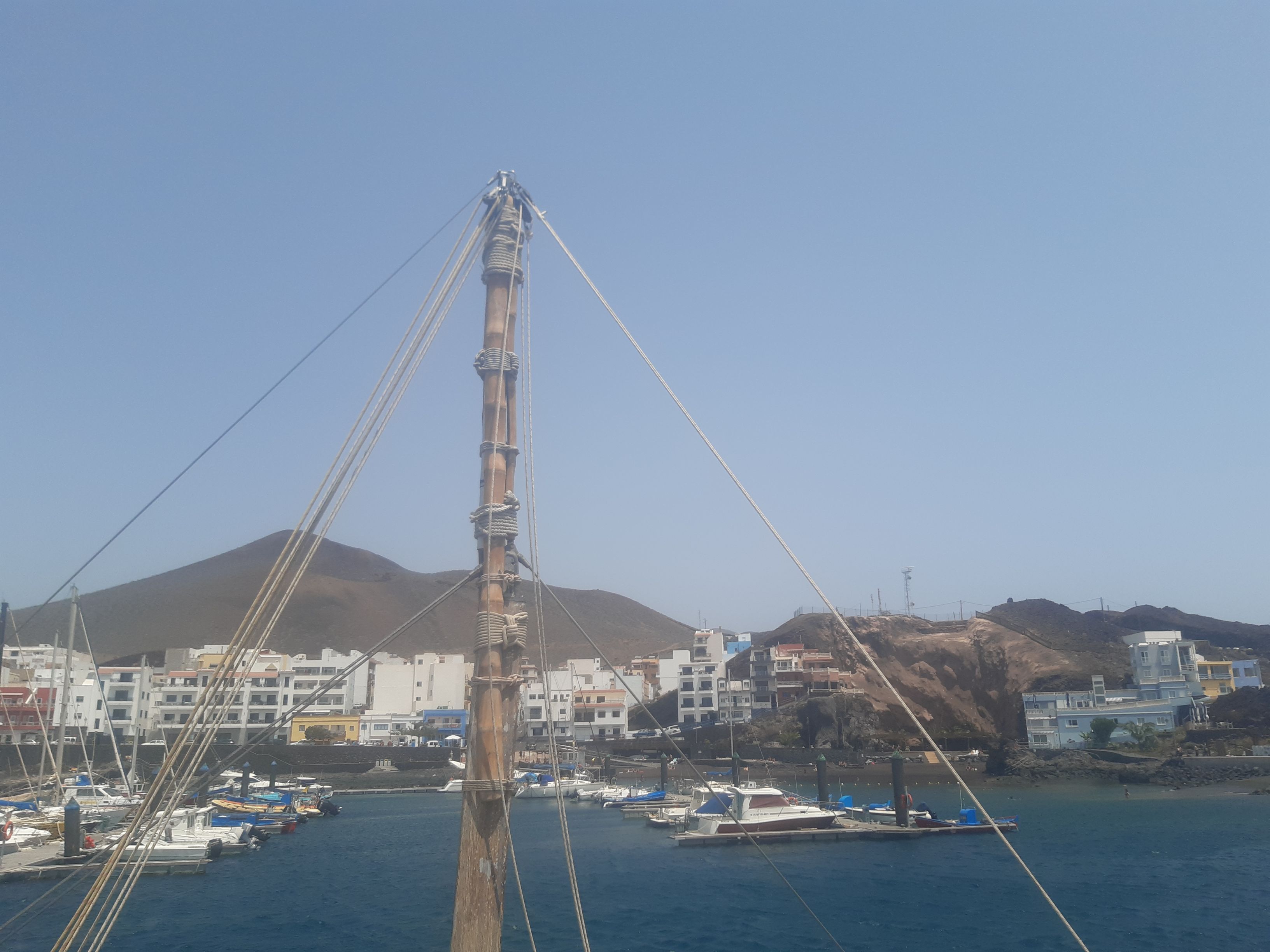
We discovered that this odd vessel made it to El Hierro. Although a diver's dinghy had to tow them into the port (their engine was damaged), they somehow managed to cover the 60 miles between the islands. Our jaws dropped to the ground when we spoke with the owner. The guy was from Uruguay and, just before the pandemic, decided to sail alone to Europe. He encountered a storm that broke his mast and tore his sails. Consequently, he somehow tied up the mast and remaining scraps of the sail and changed course to the Caribbean. However, sailors reaching the larger islands were placed in a two-week quarantine in the most luxurious hotels and had to pay a hefty sum for their stay. Waiting on smaller atolls was not an option because he was uncertain about the engine, and maneuvering with a makeshift sail among the reefs could end even worse. For this reason, he again set course for Europe. Finally, he docked in Madeira, where a good soul gave him a bamboo pole, which he could use to reinforce and extend his mast. So equipped, he reached Gomera, where he worked for a few months to earn money for engine repairs and just arrived at La Restinga to finally take the boat out of the water and undertake the necessary repairs.
Since we still had some time, we decided to spend a day visiting the El Hierro Giant Lizard Recovery Center and the nearby open-air museum. These lizards can grow up to 60 cm, but the ones we saw were slightly smaller—about 40 cm with the tail. The species was considered extinct, but a persistent Viennese biologist, Oskar Simony, decided to search for it. He hypothesized what the feces of a large omnivorous lizard might look like, crafted a model out of clay, and showed it to local shepherds, asking if they had seen anything like it. It turned out they had, and thus the species was rediscovered. It remains critically endangered, but the number of individuals is growing. They are being bred in captivity and released into the island's wild areas.
The open-air museum, on the other hand, looked familiar in many respects—the interiors of the huts reminded us of what we remembered from our childhood in the Polish countryside. The only difference was the building material of the houses; for centuries, they were made from black volcanic stones not connected by mortar.
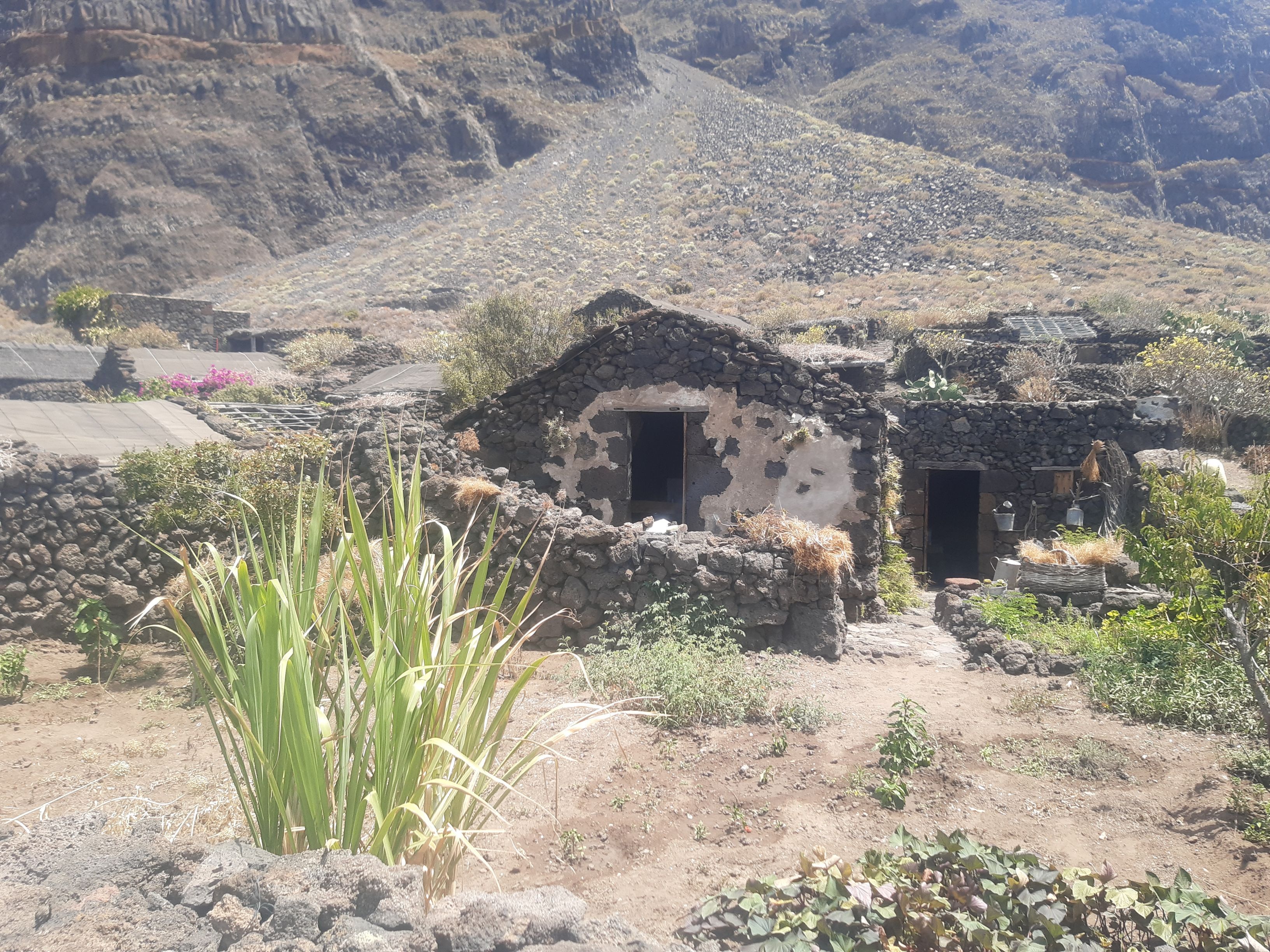
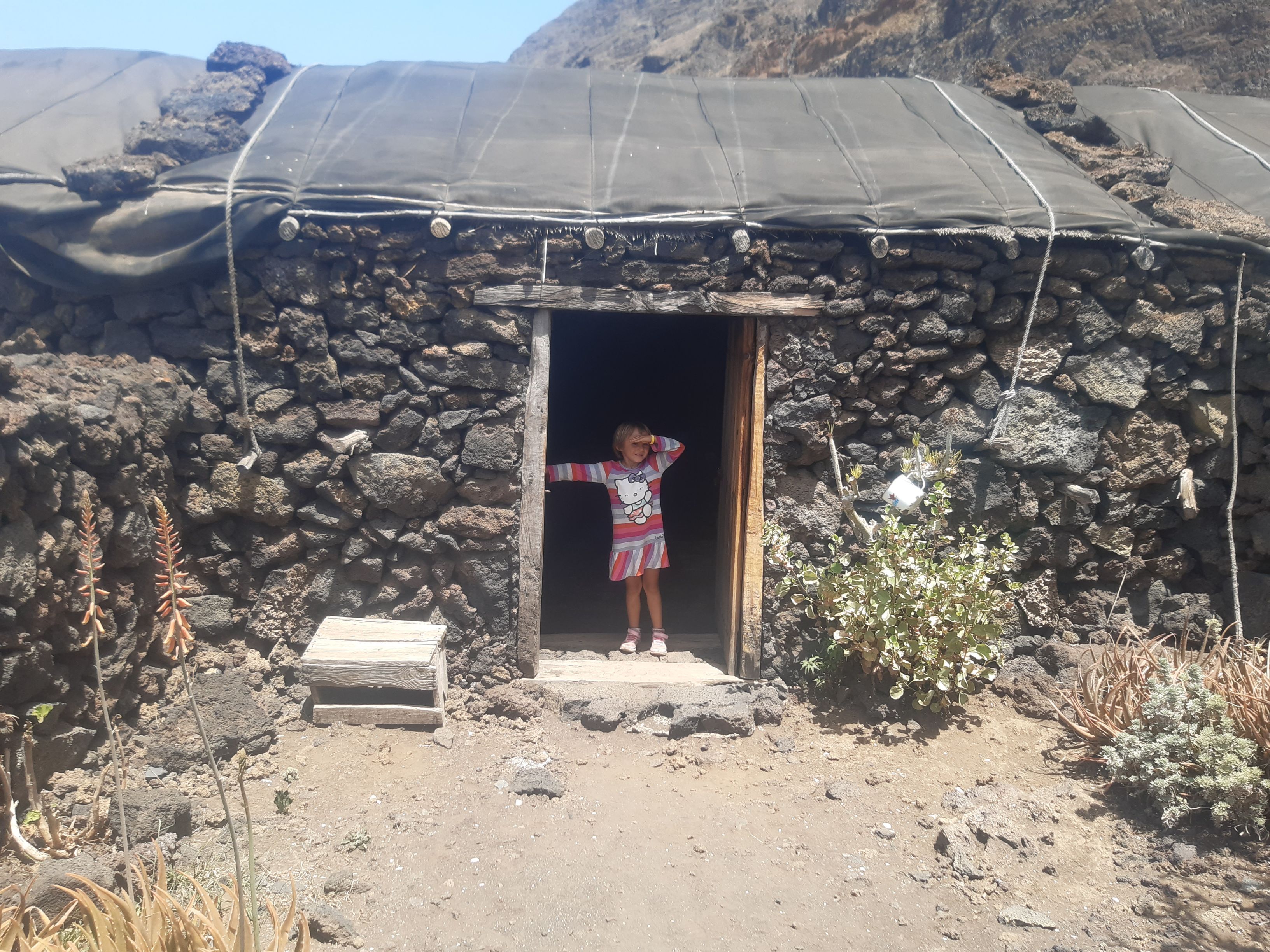
This time we are returning home via Tenerife, where we are staying at a friendly hostel. We have a room with a large terrace, on which there is a kitchen.
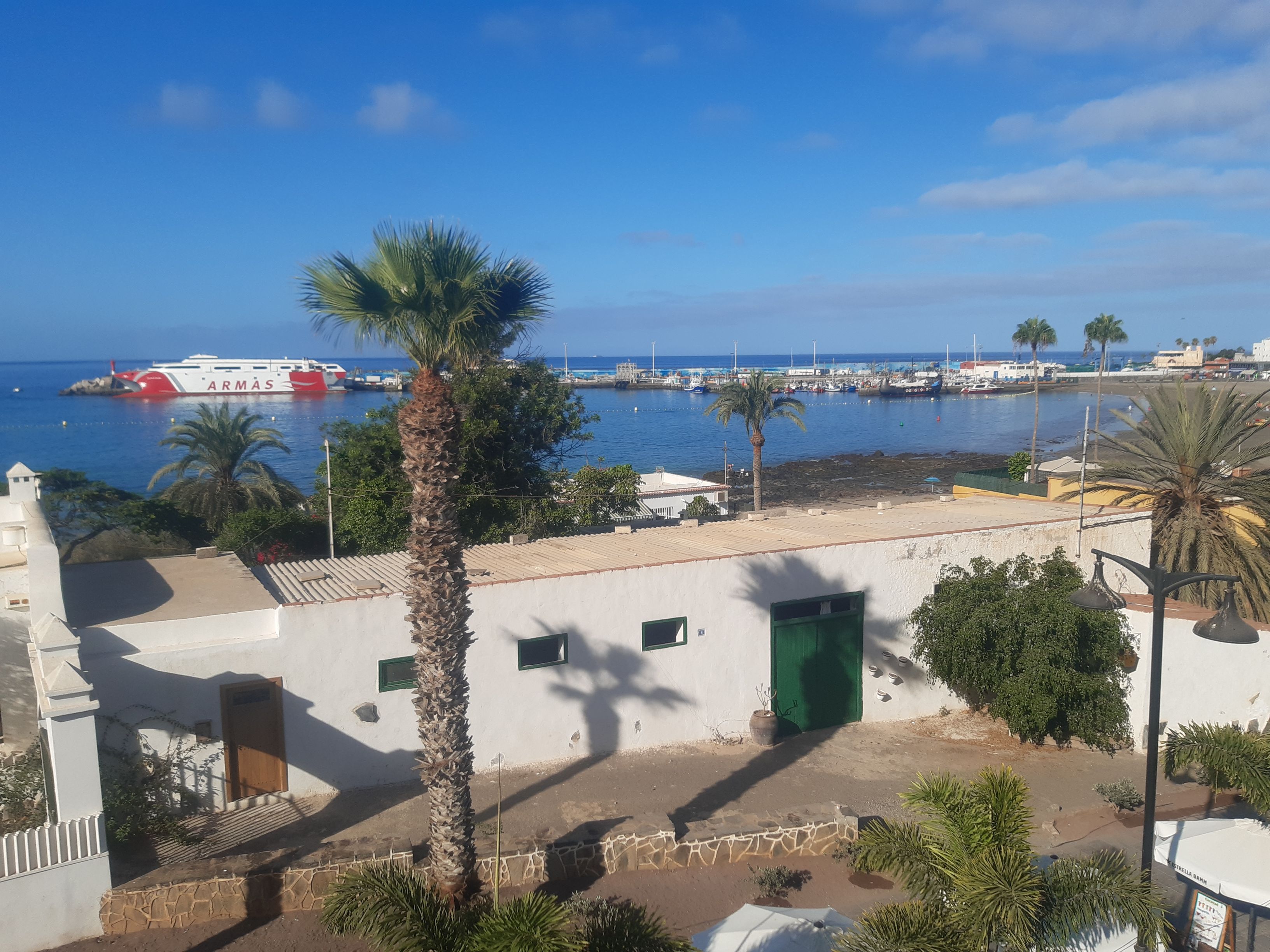
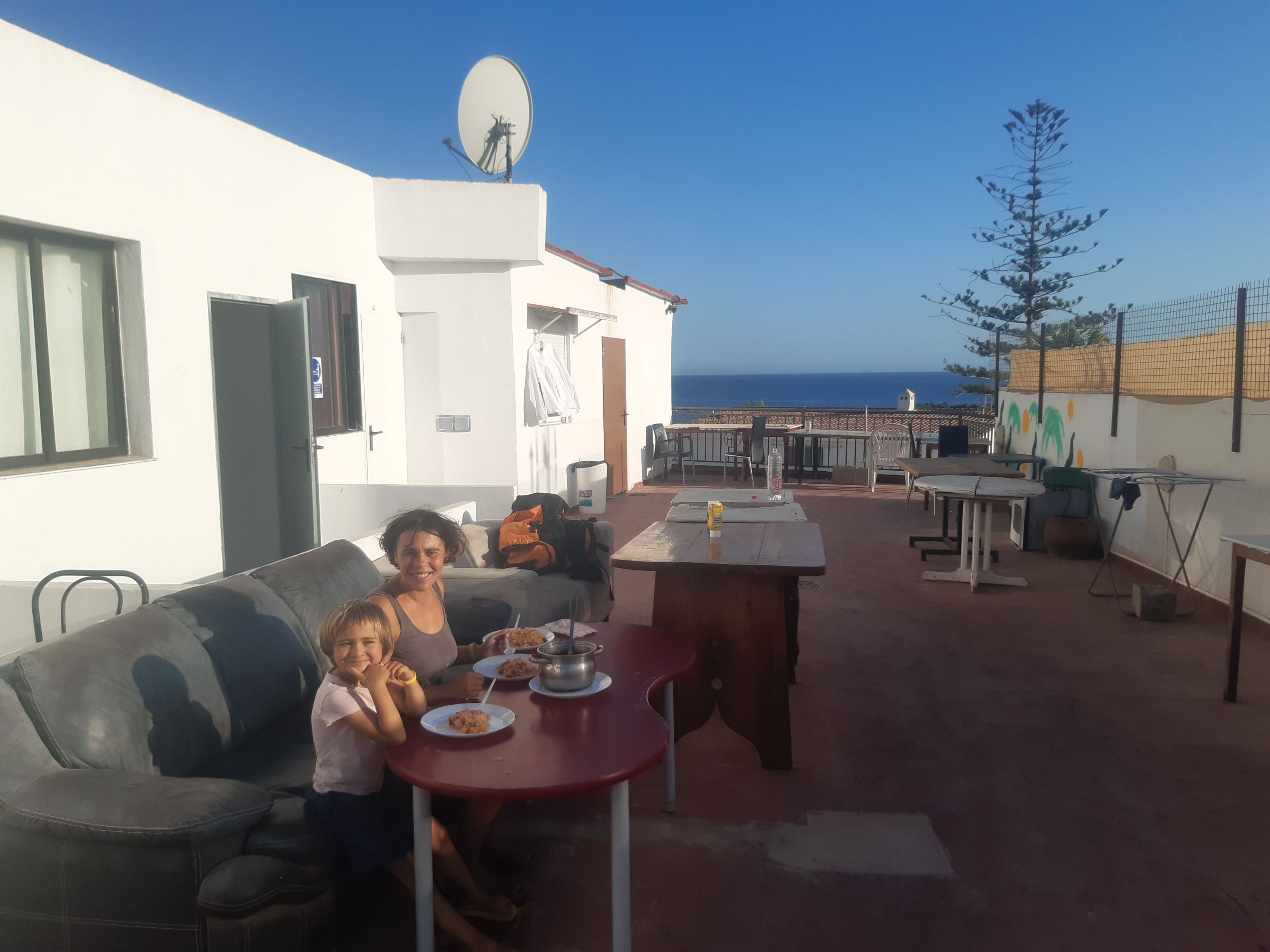
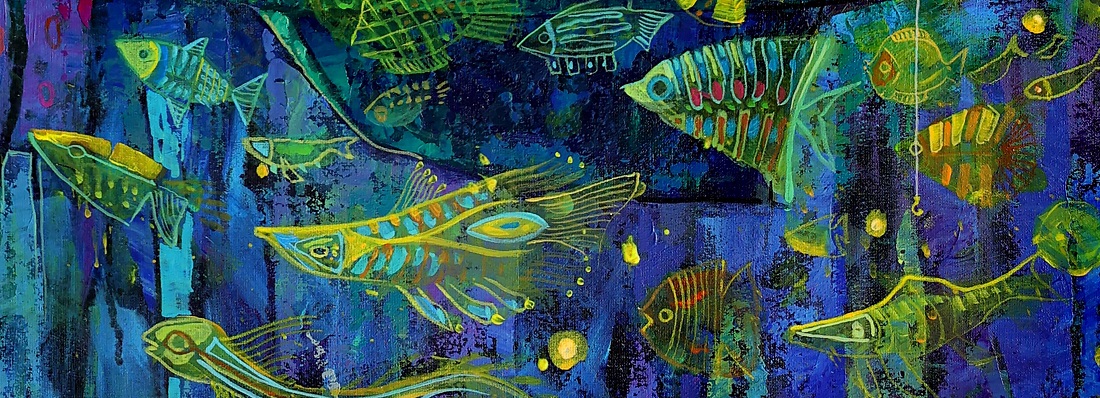
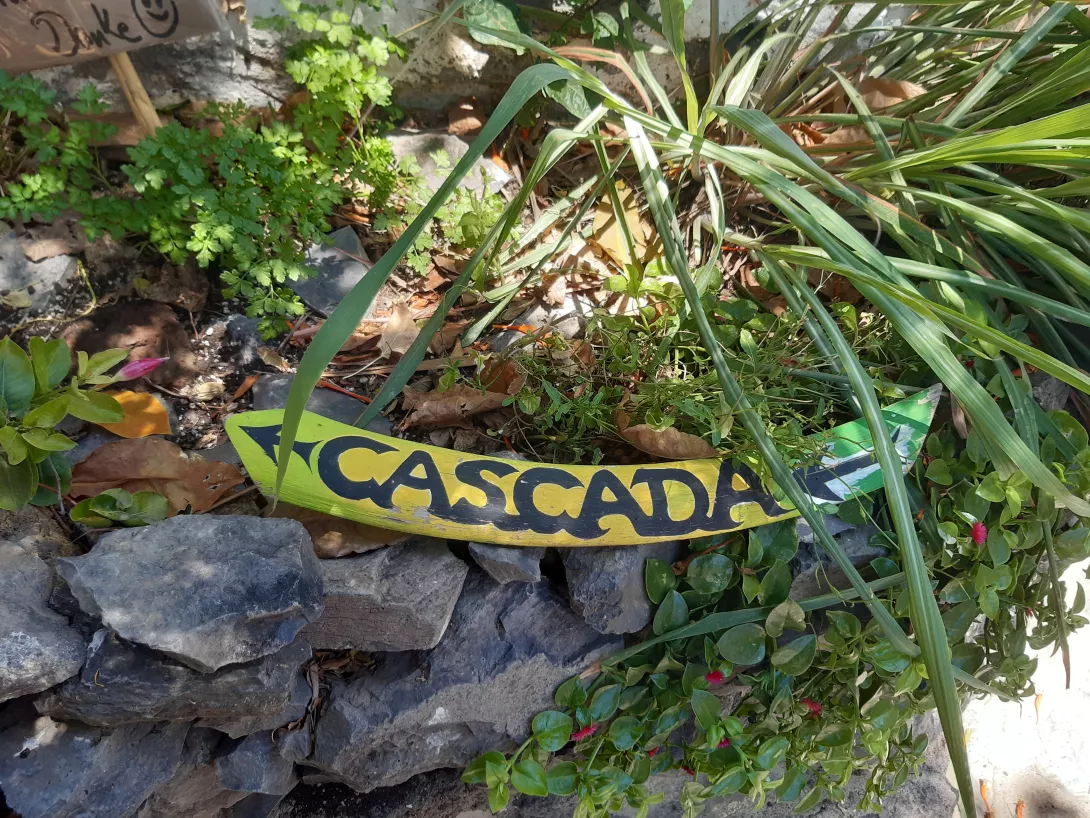
Comments